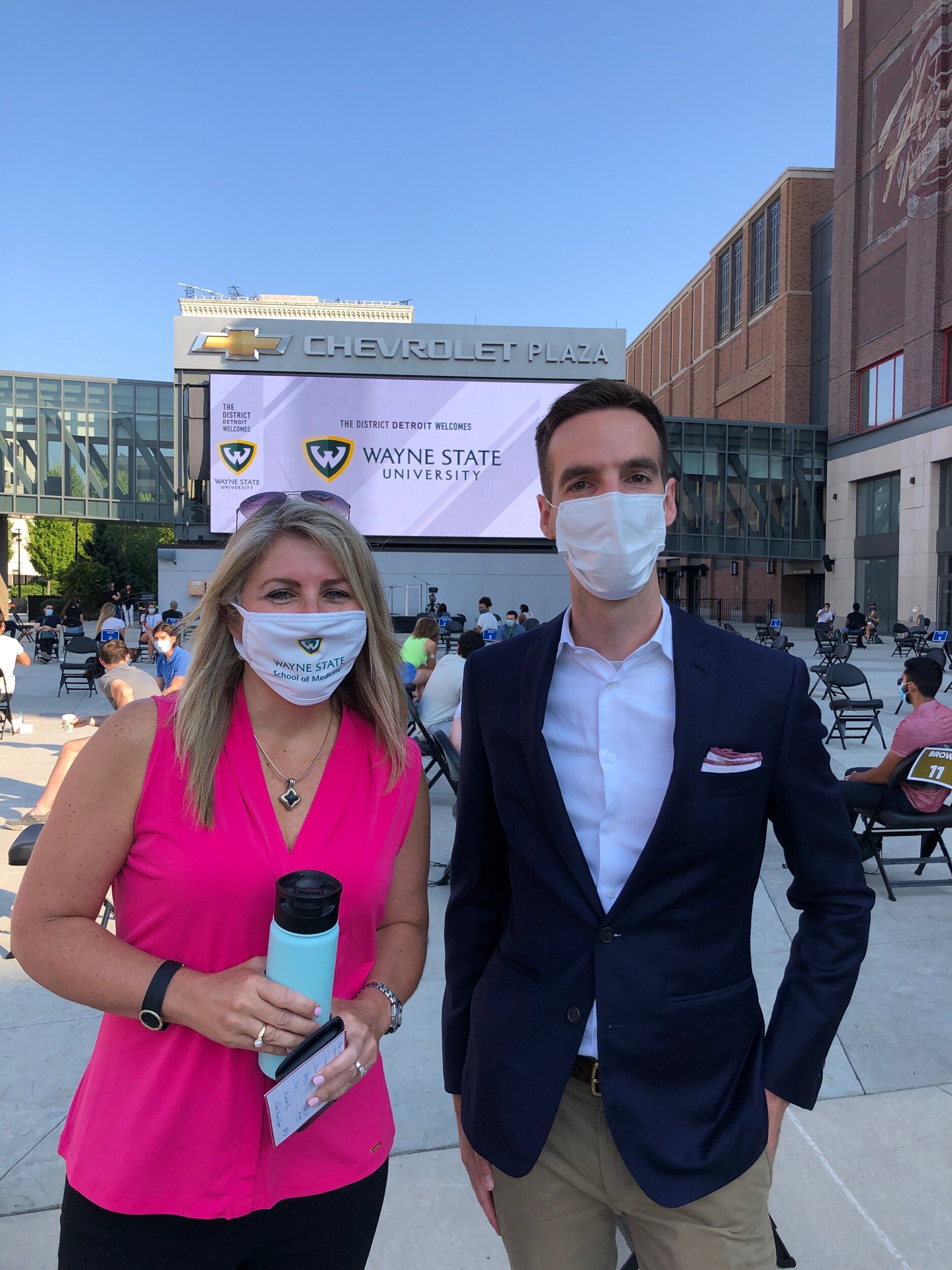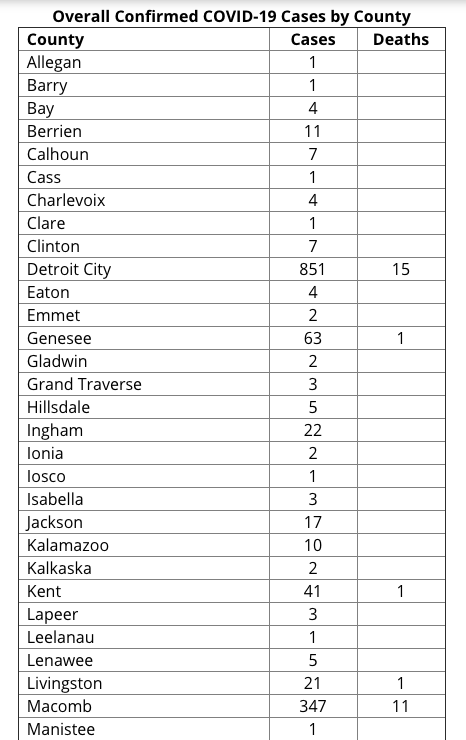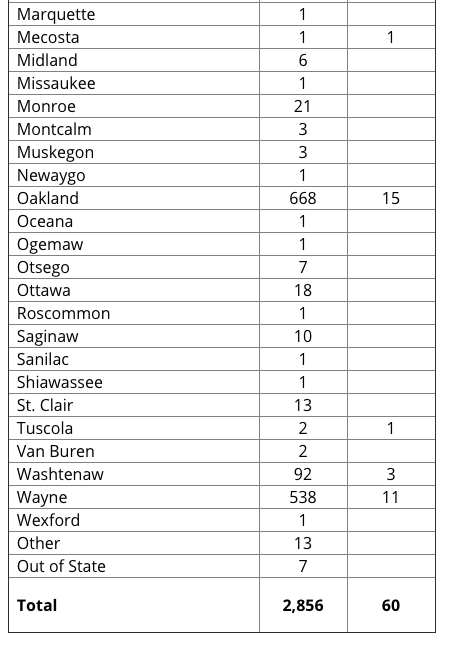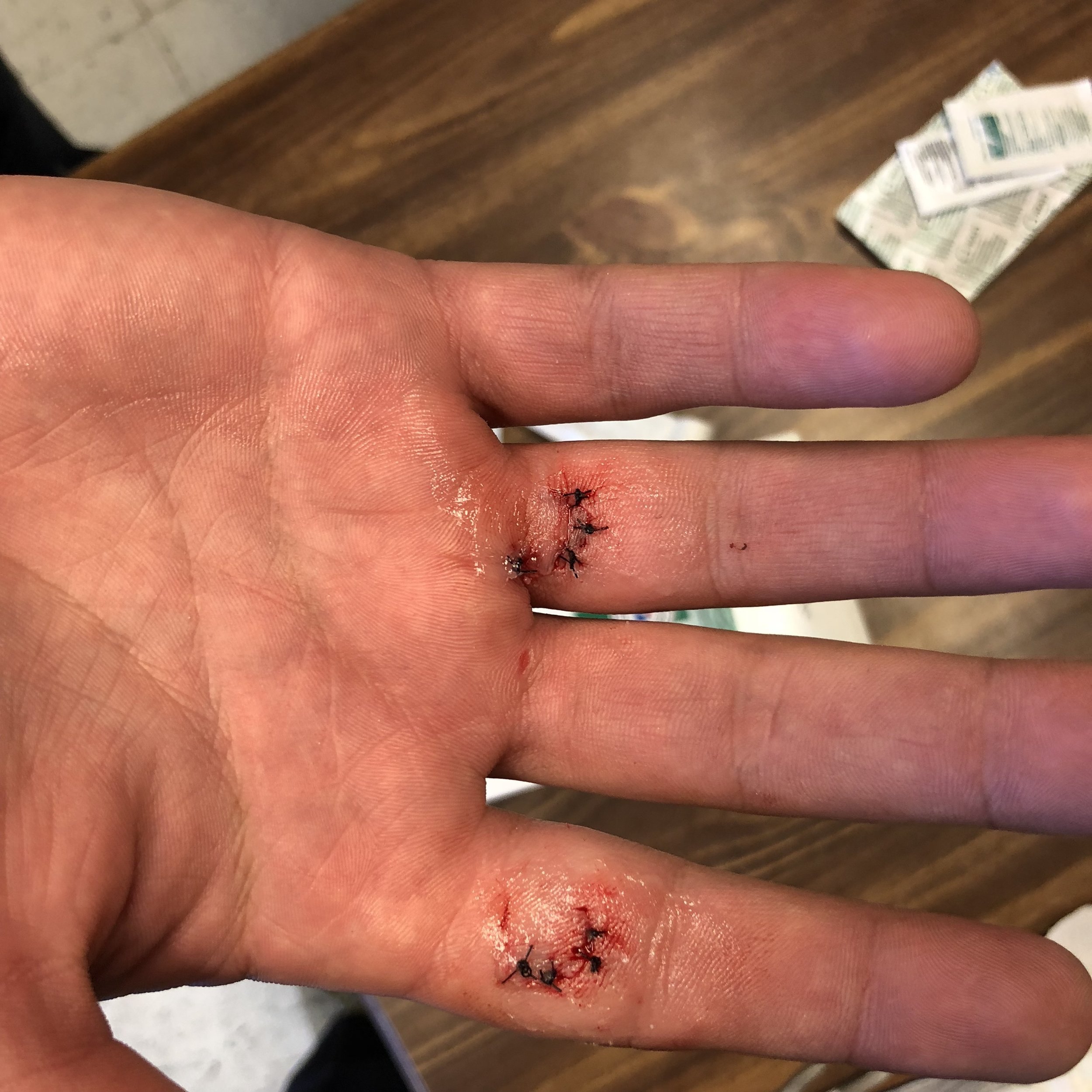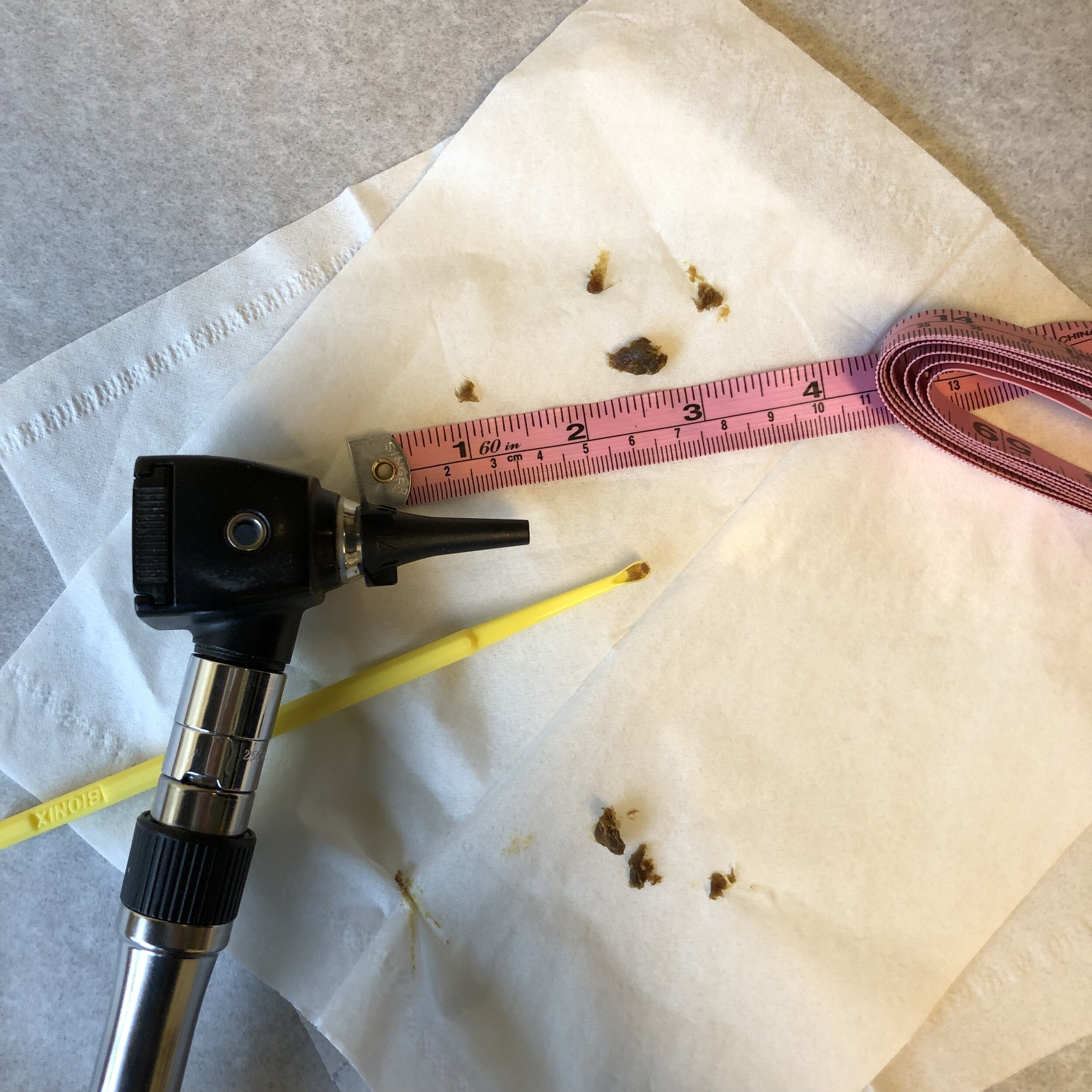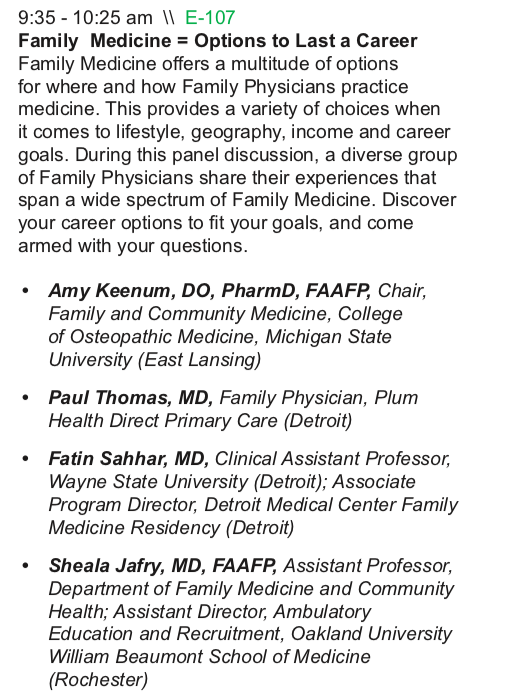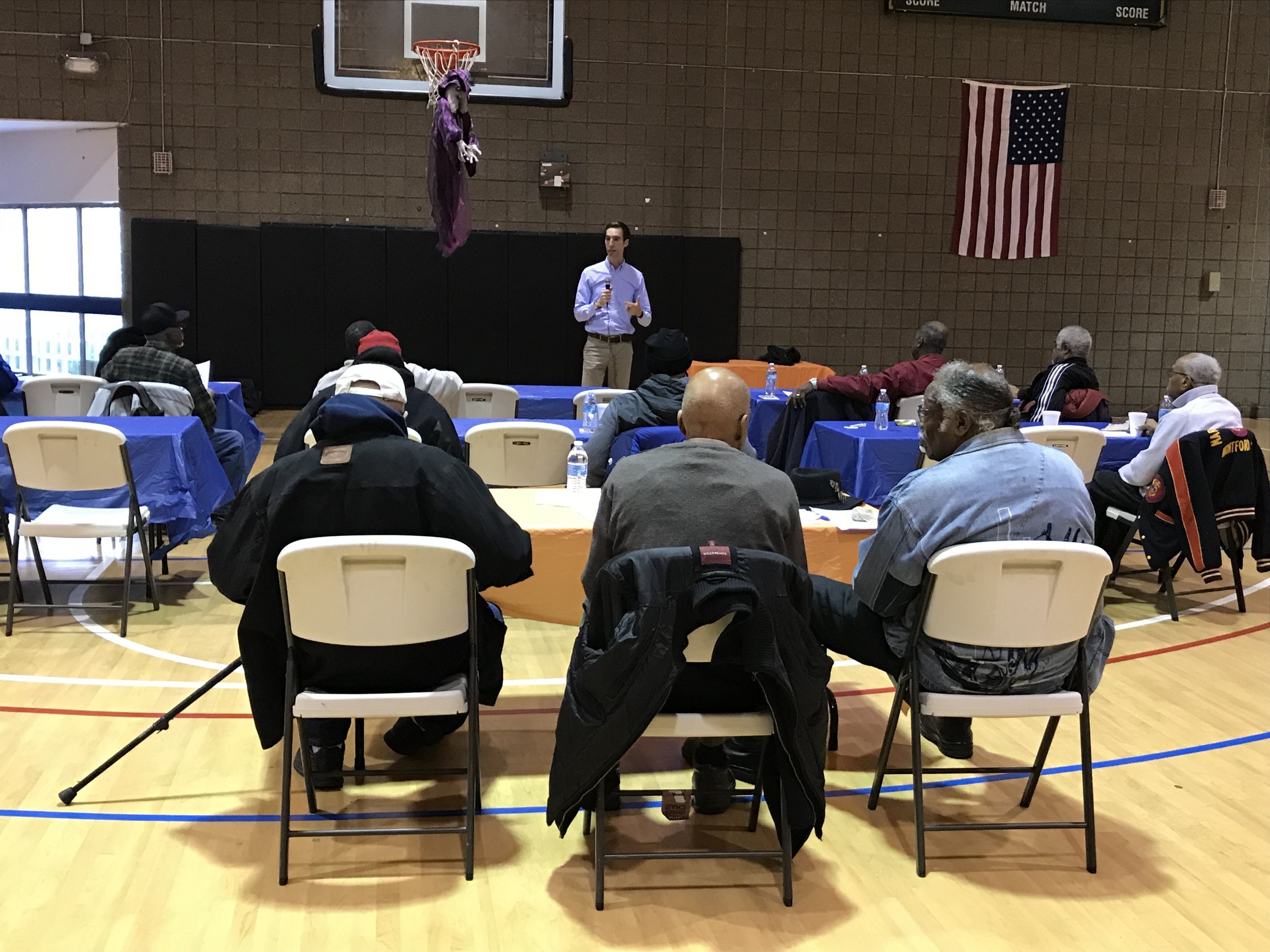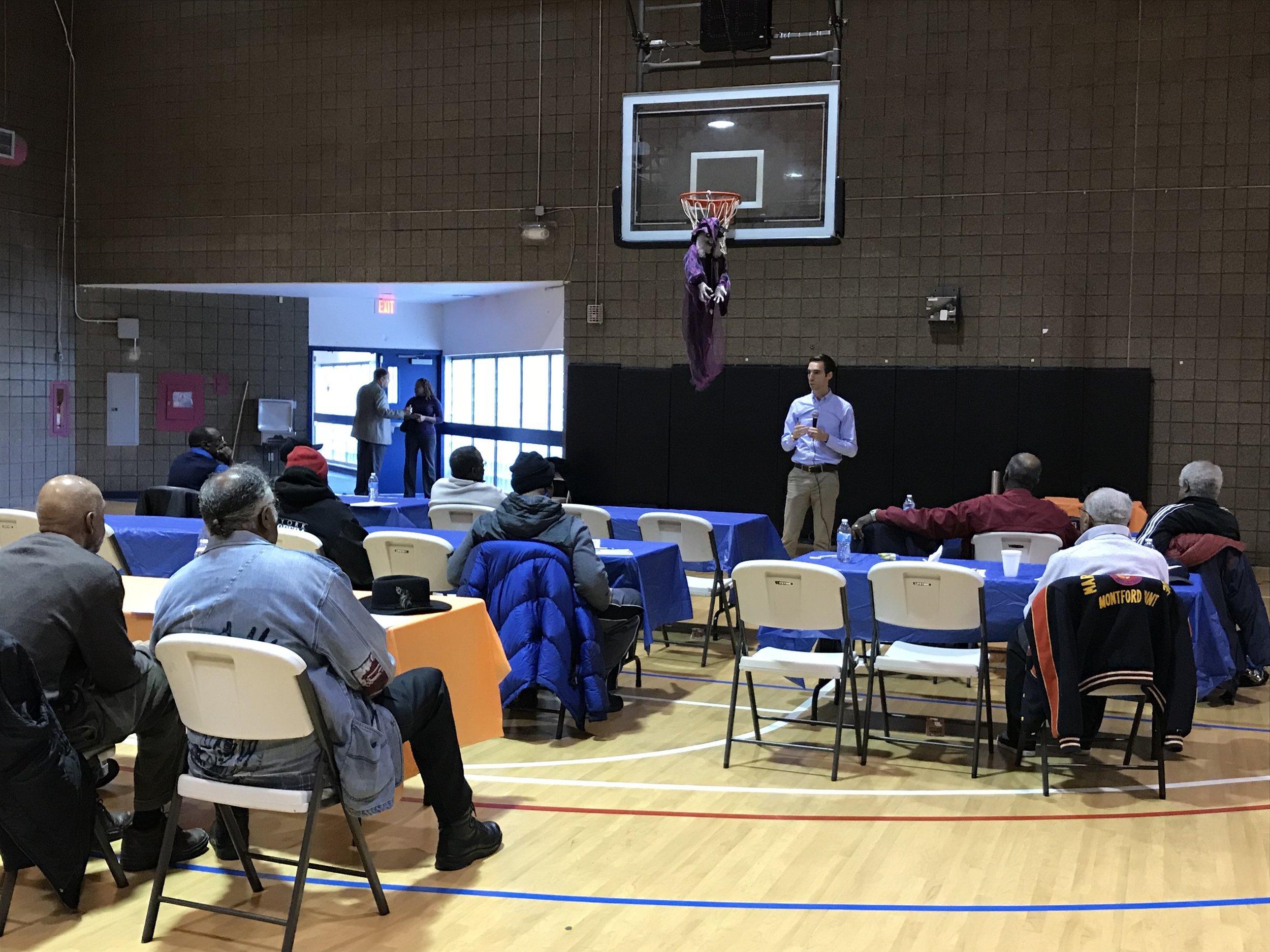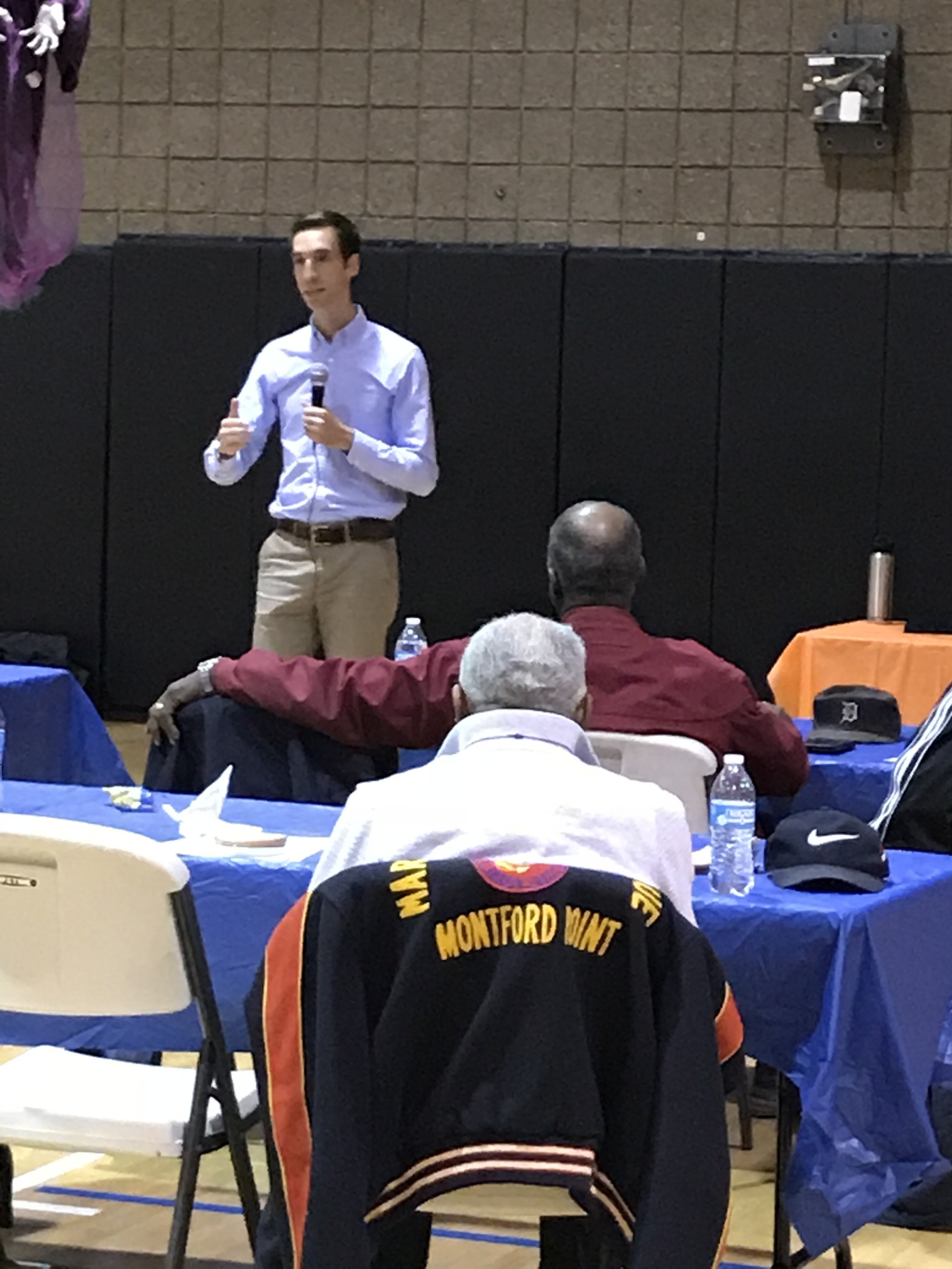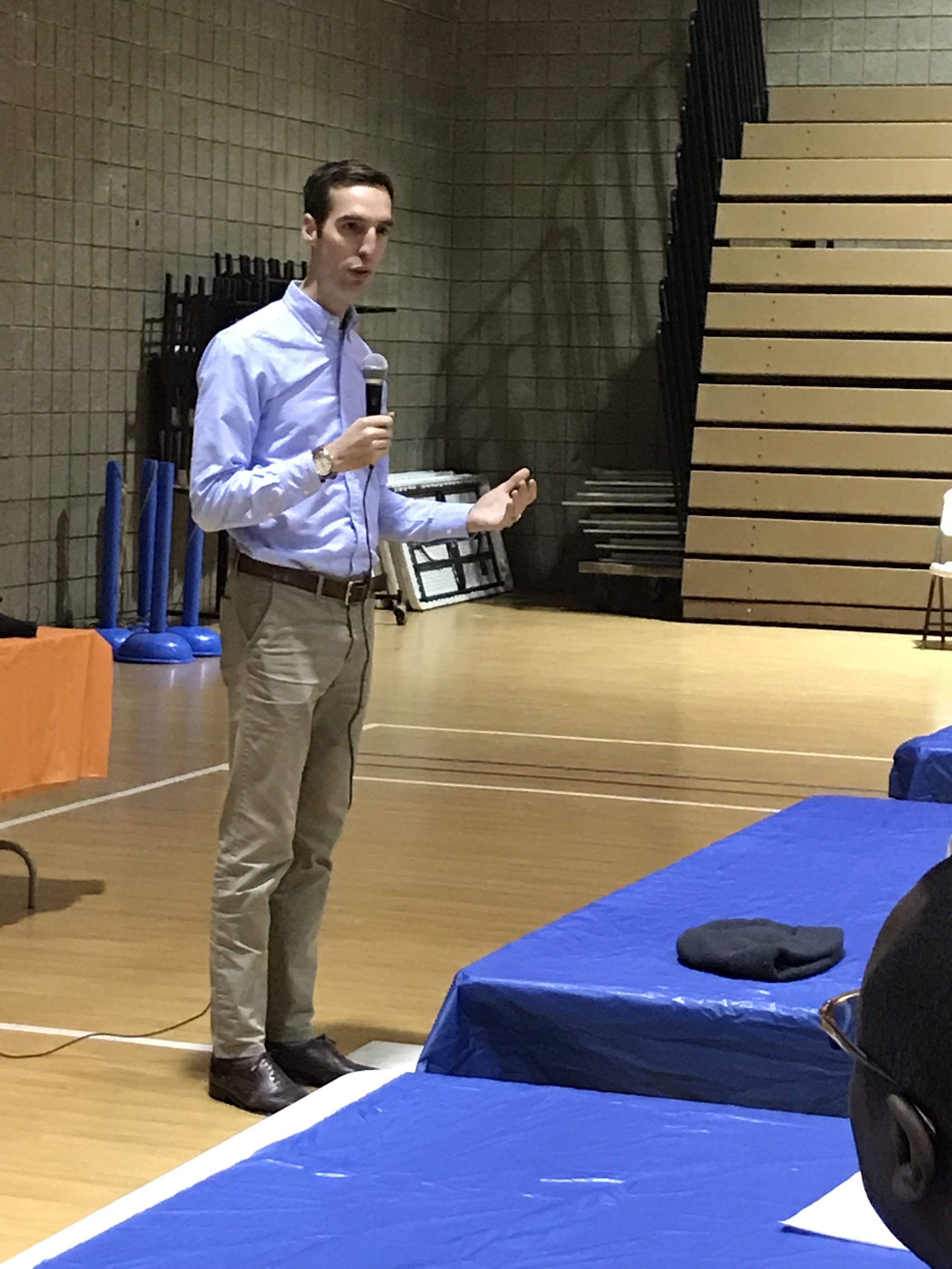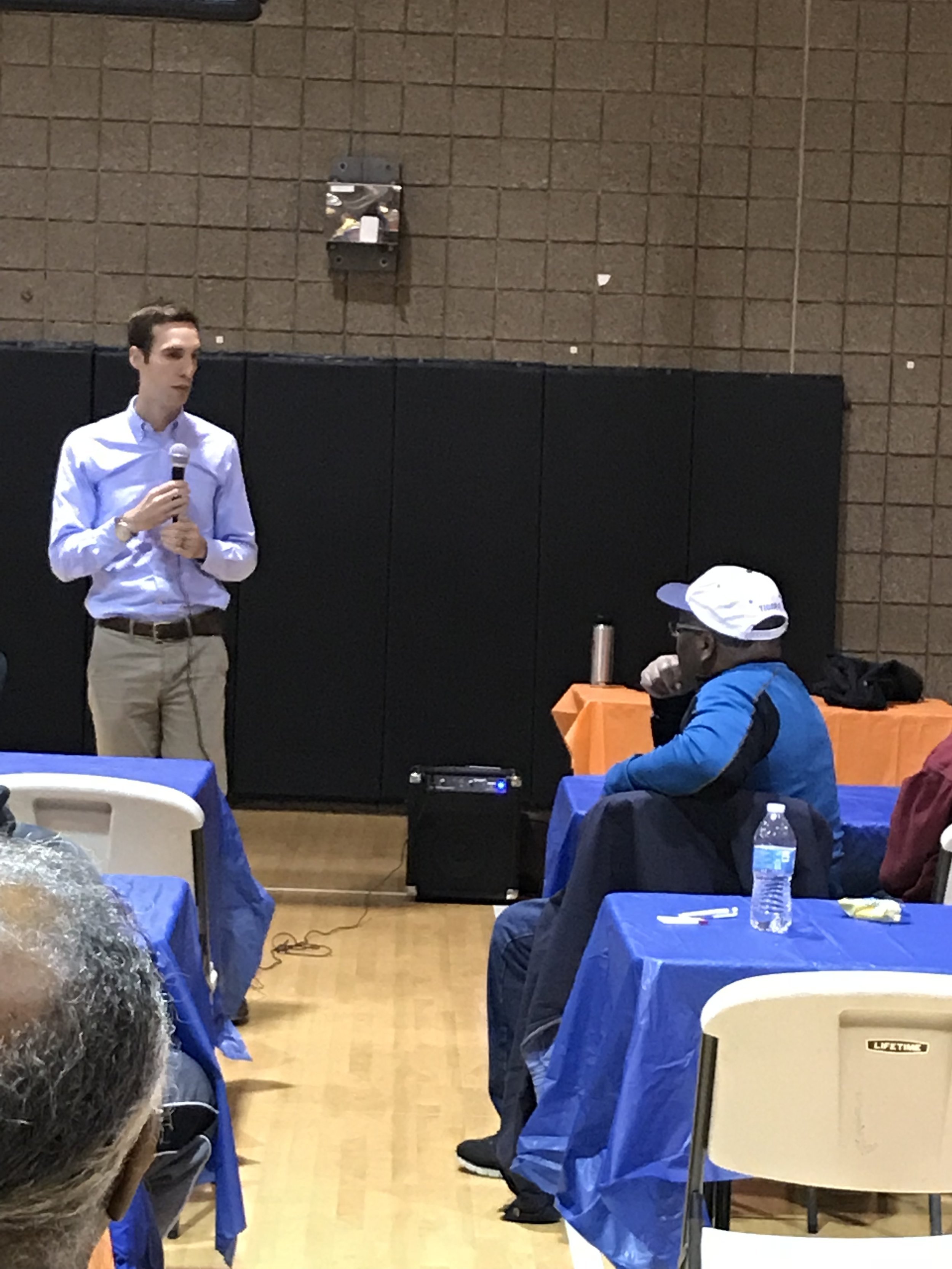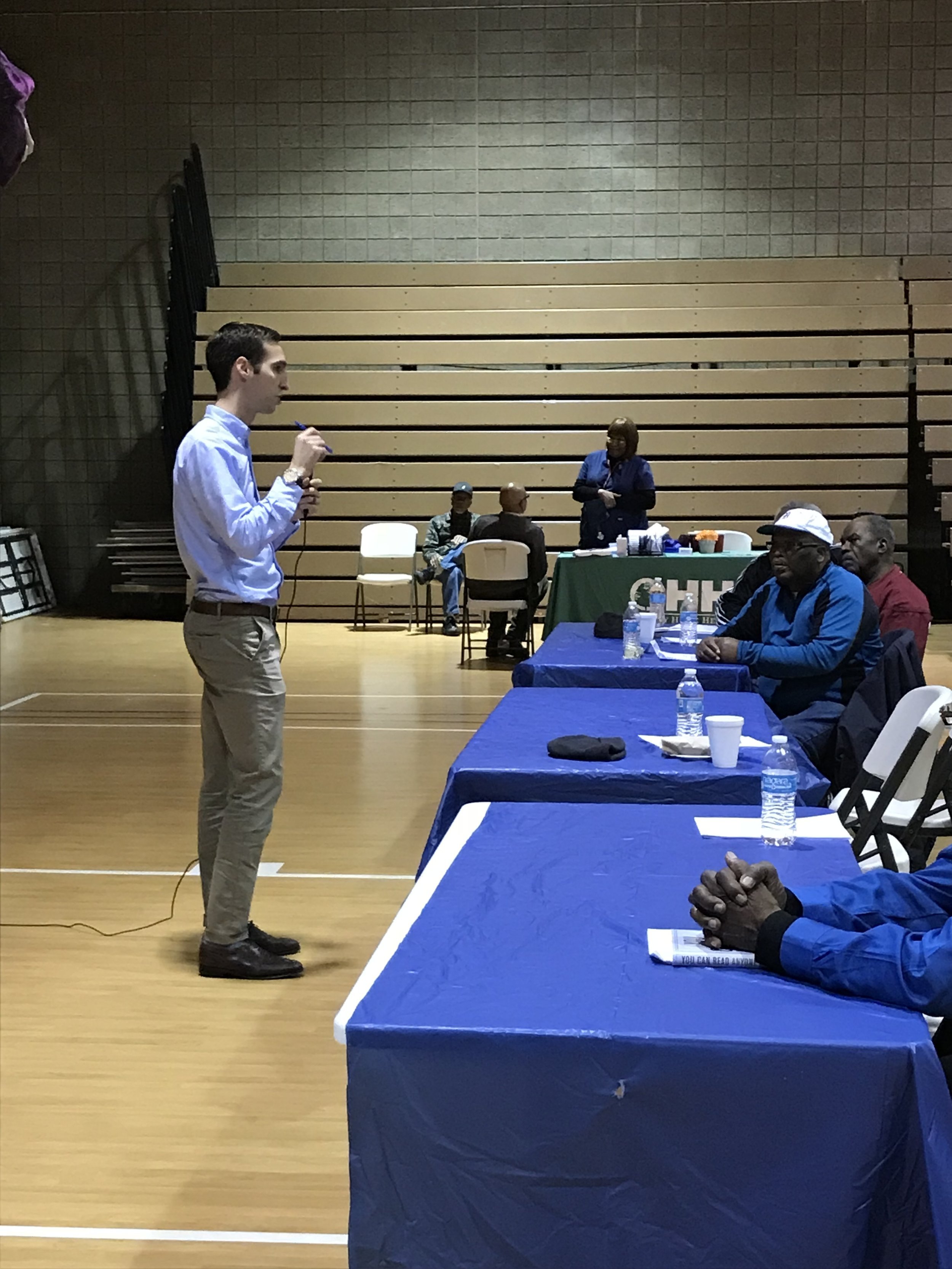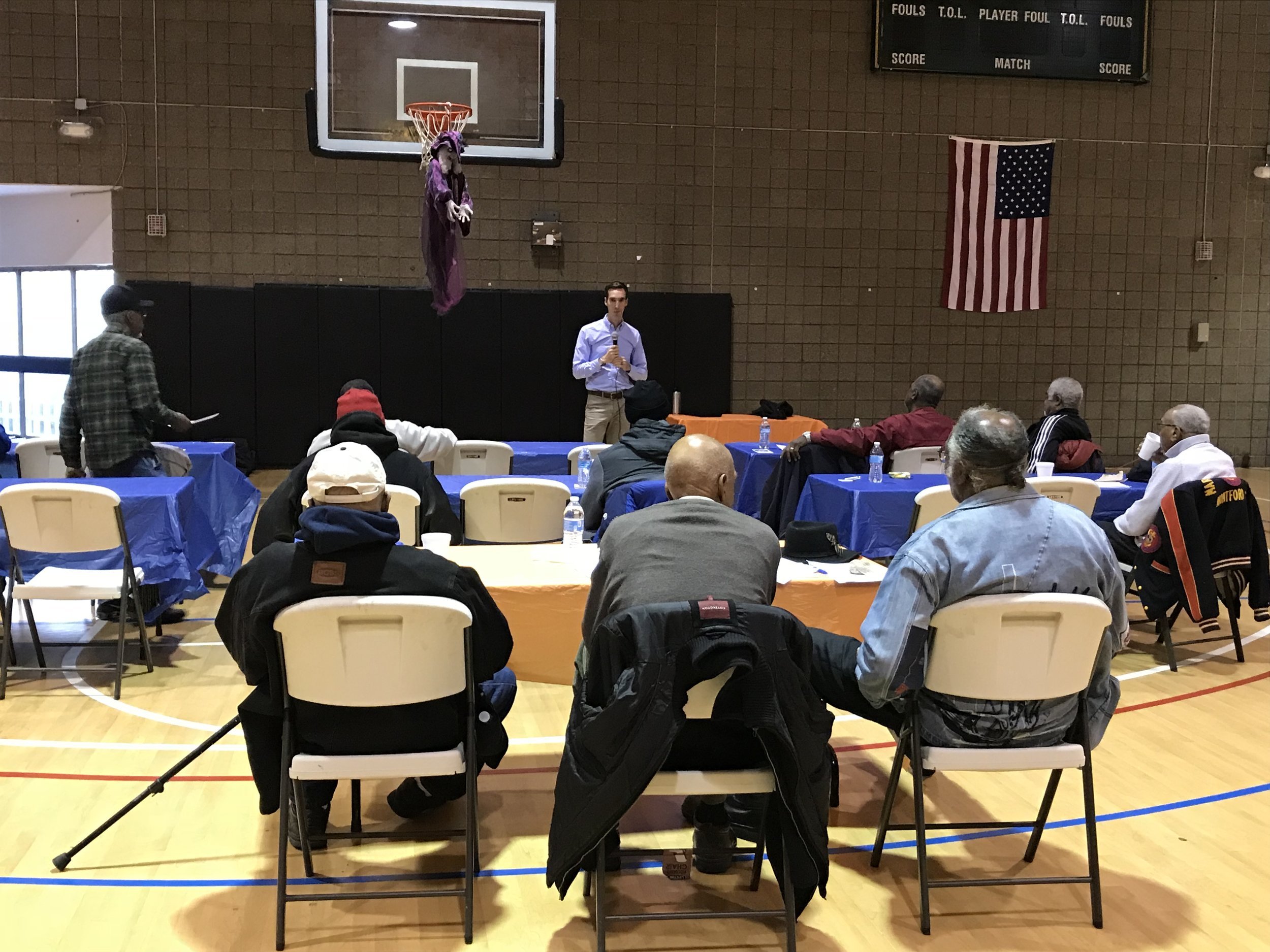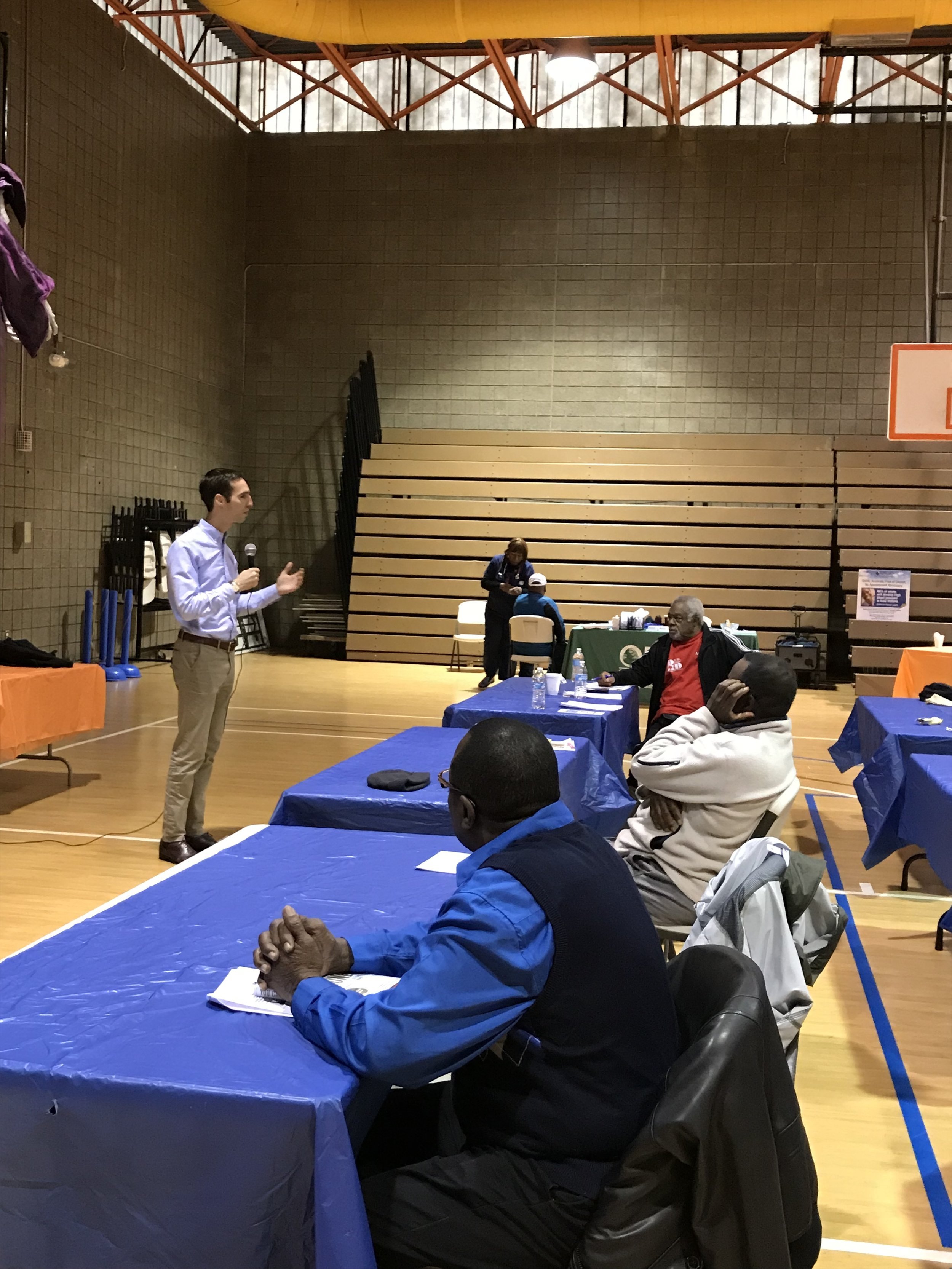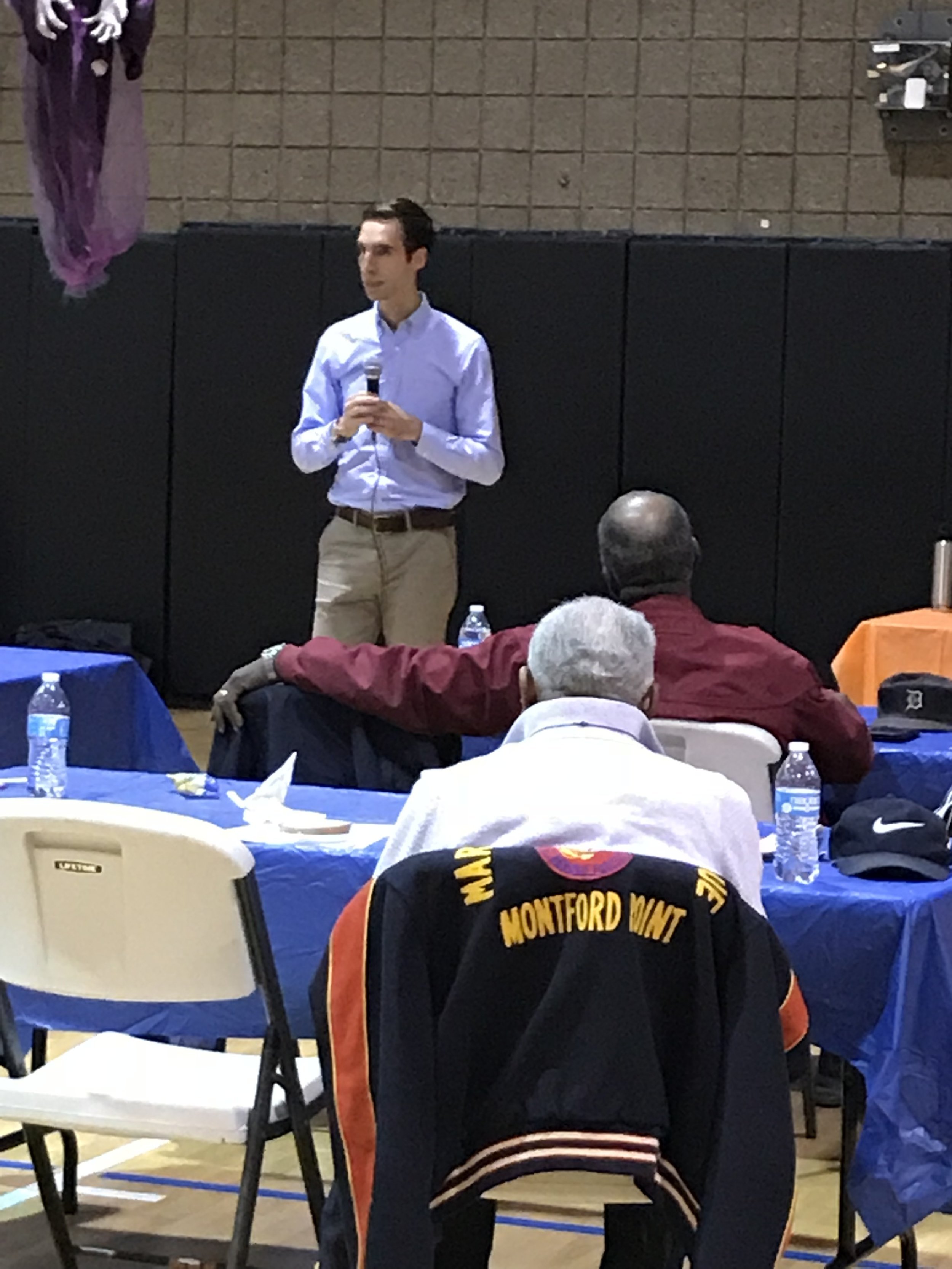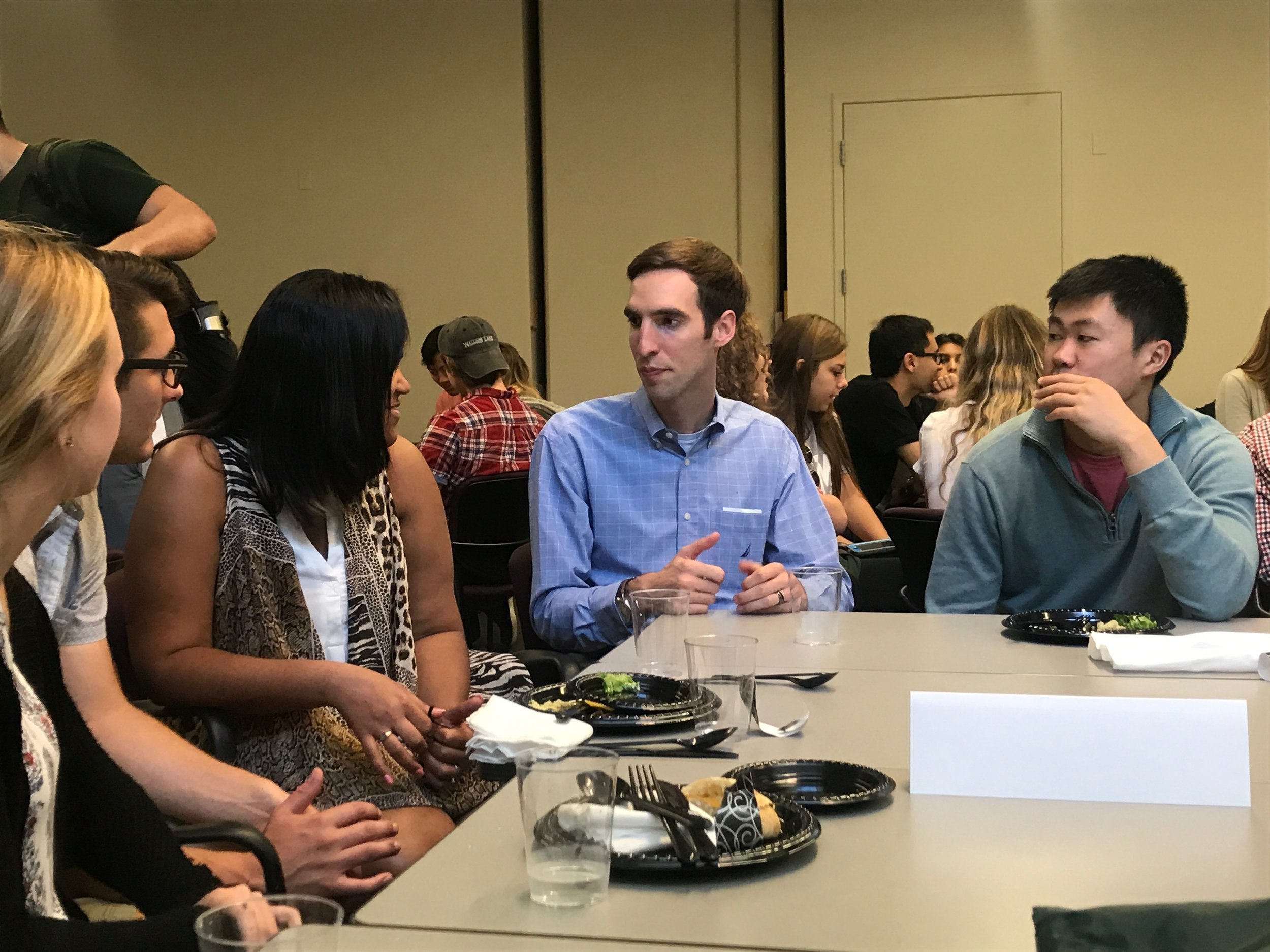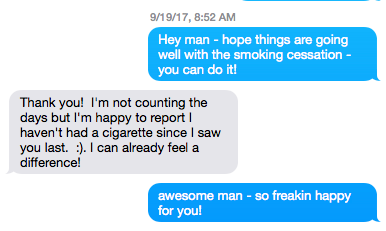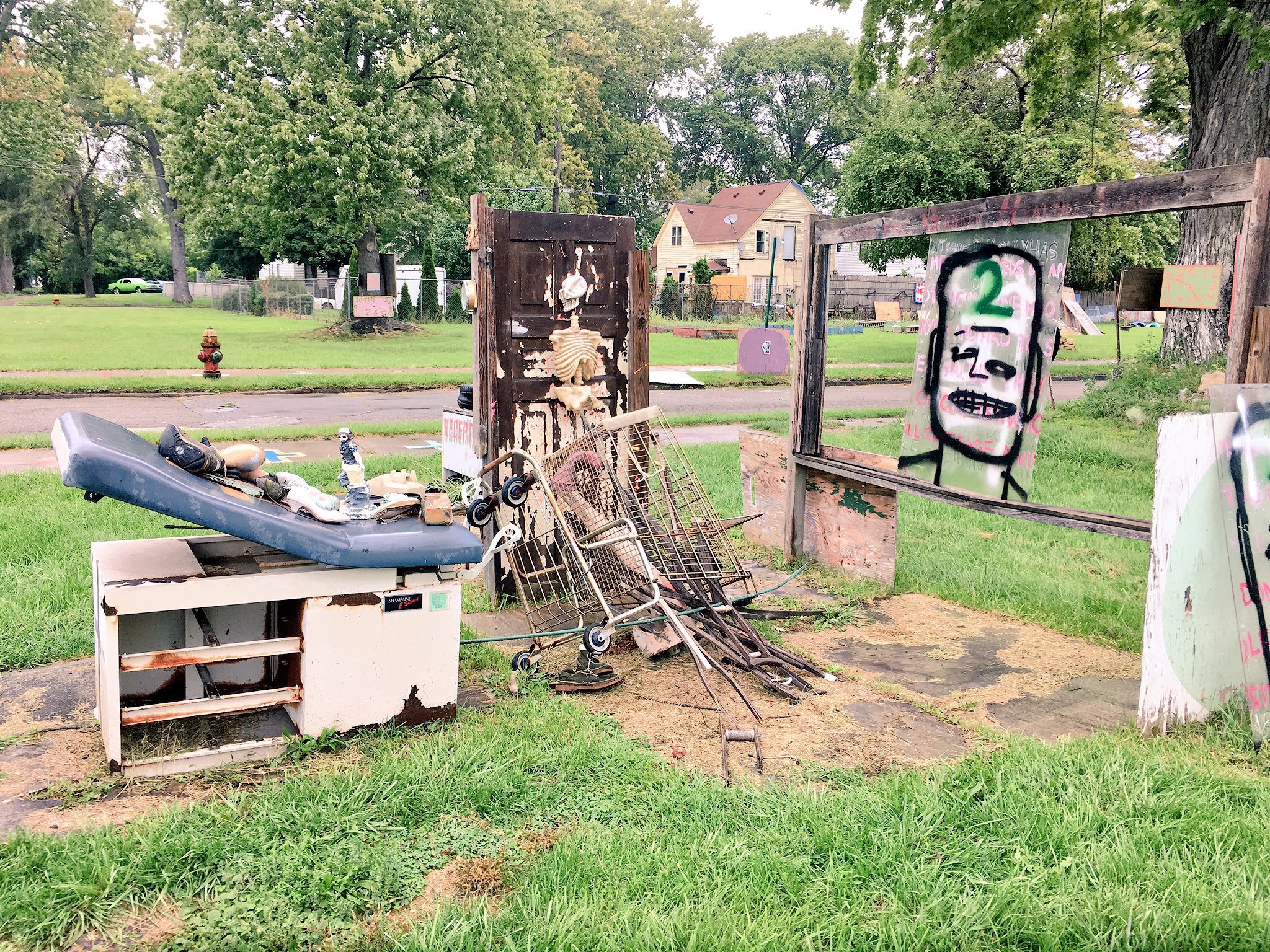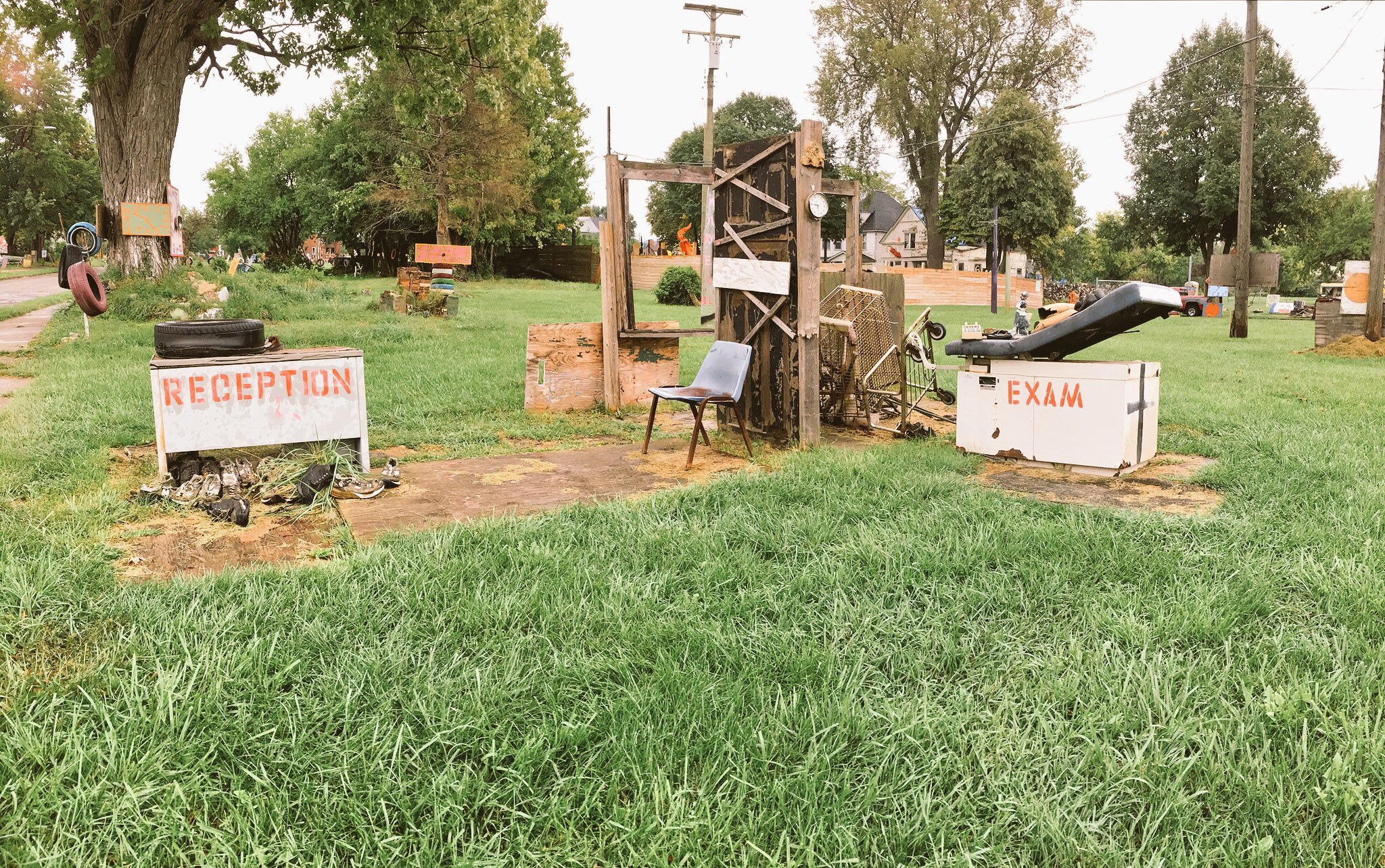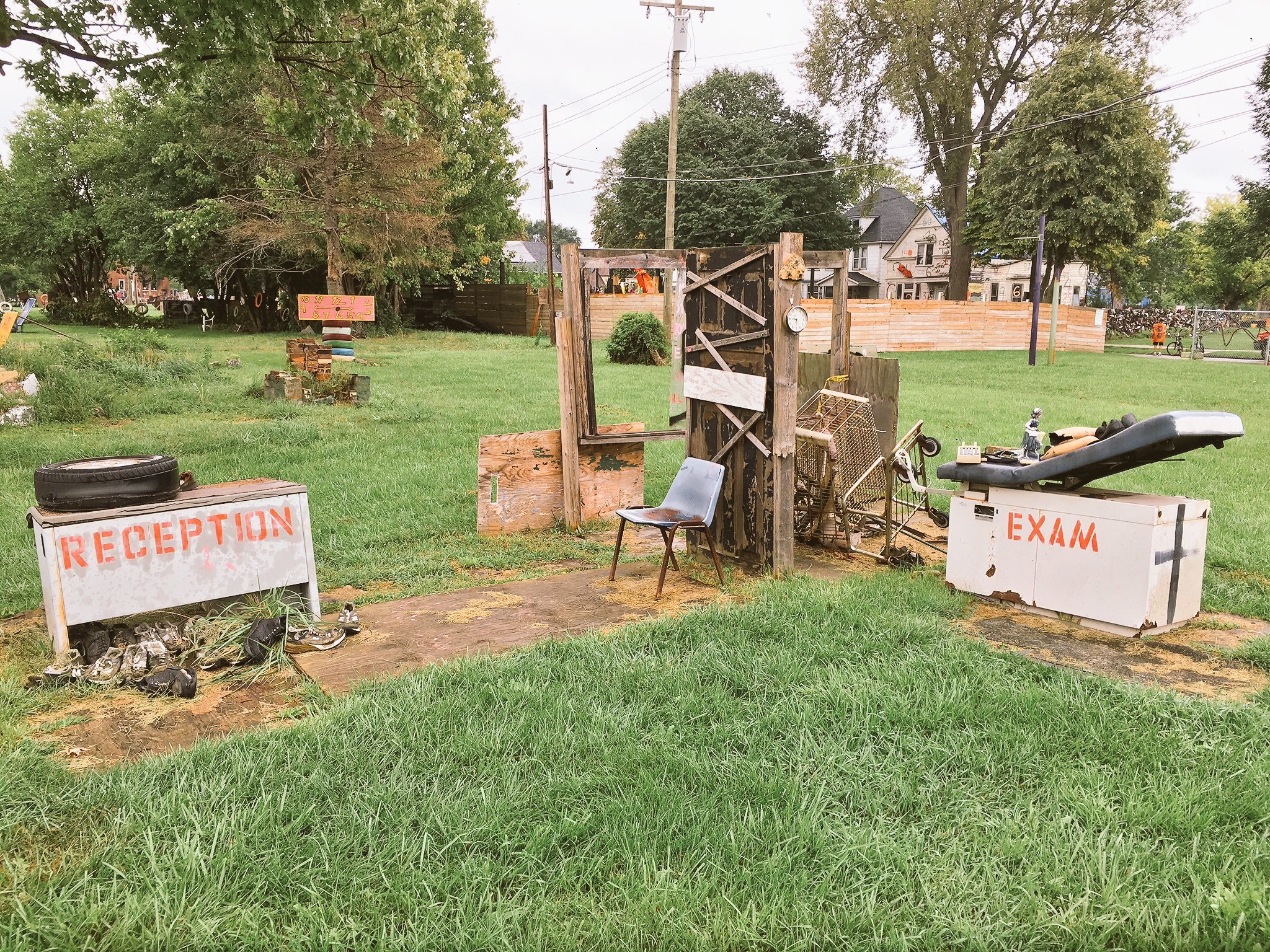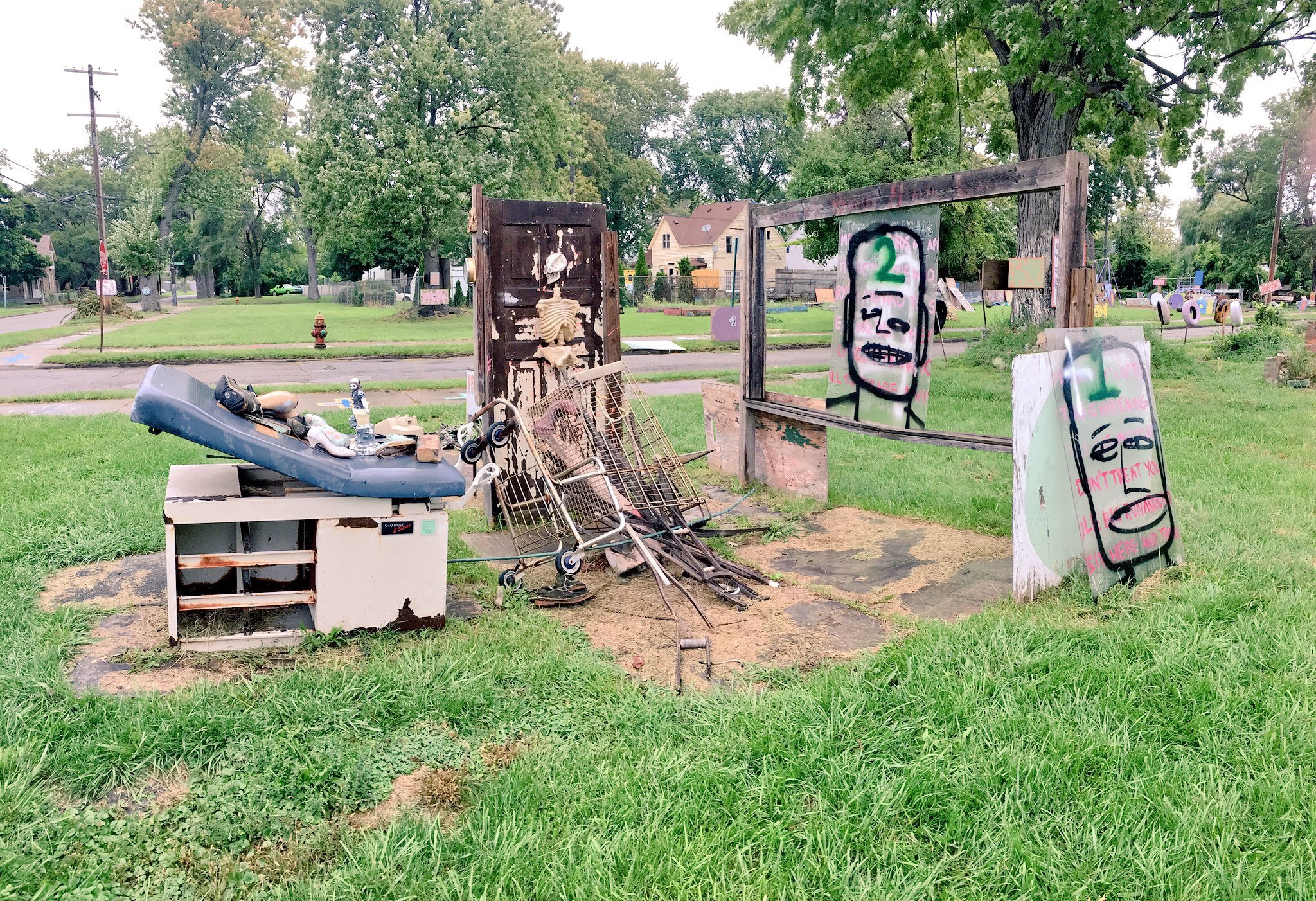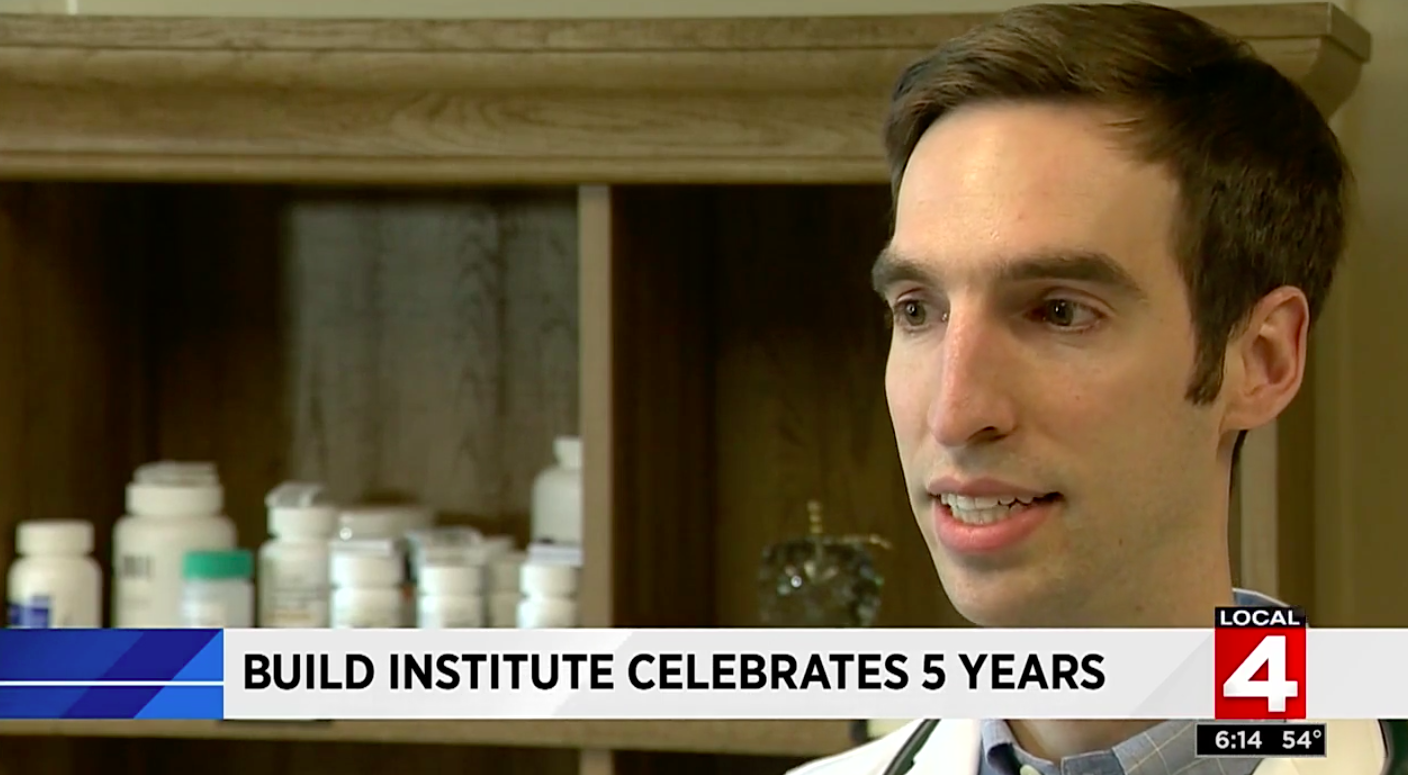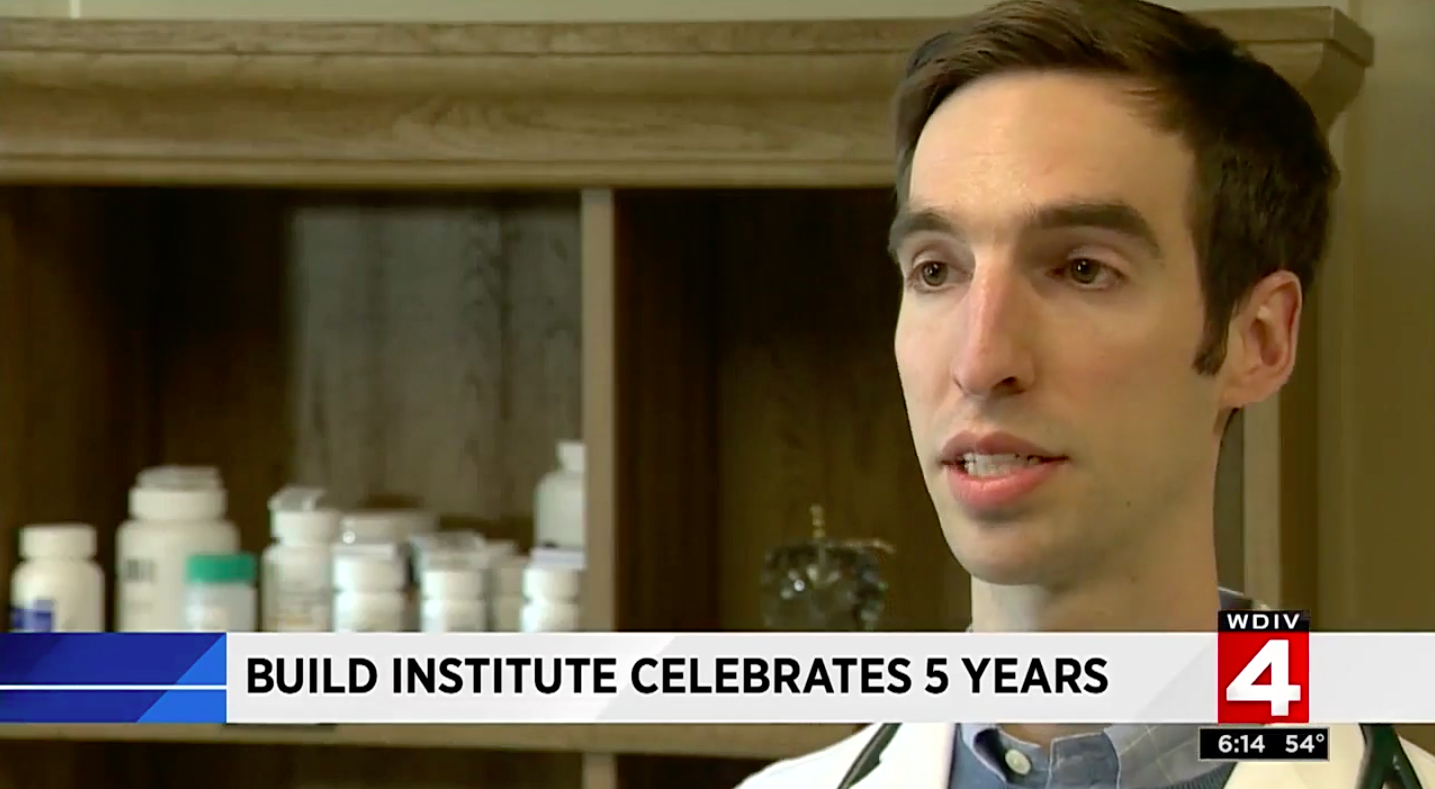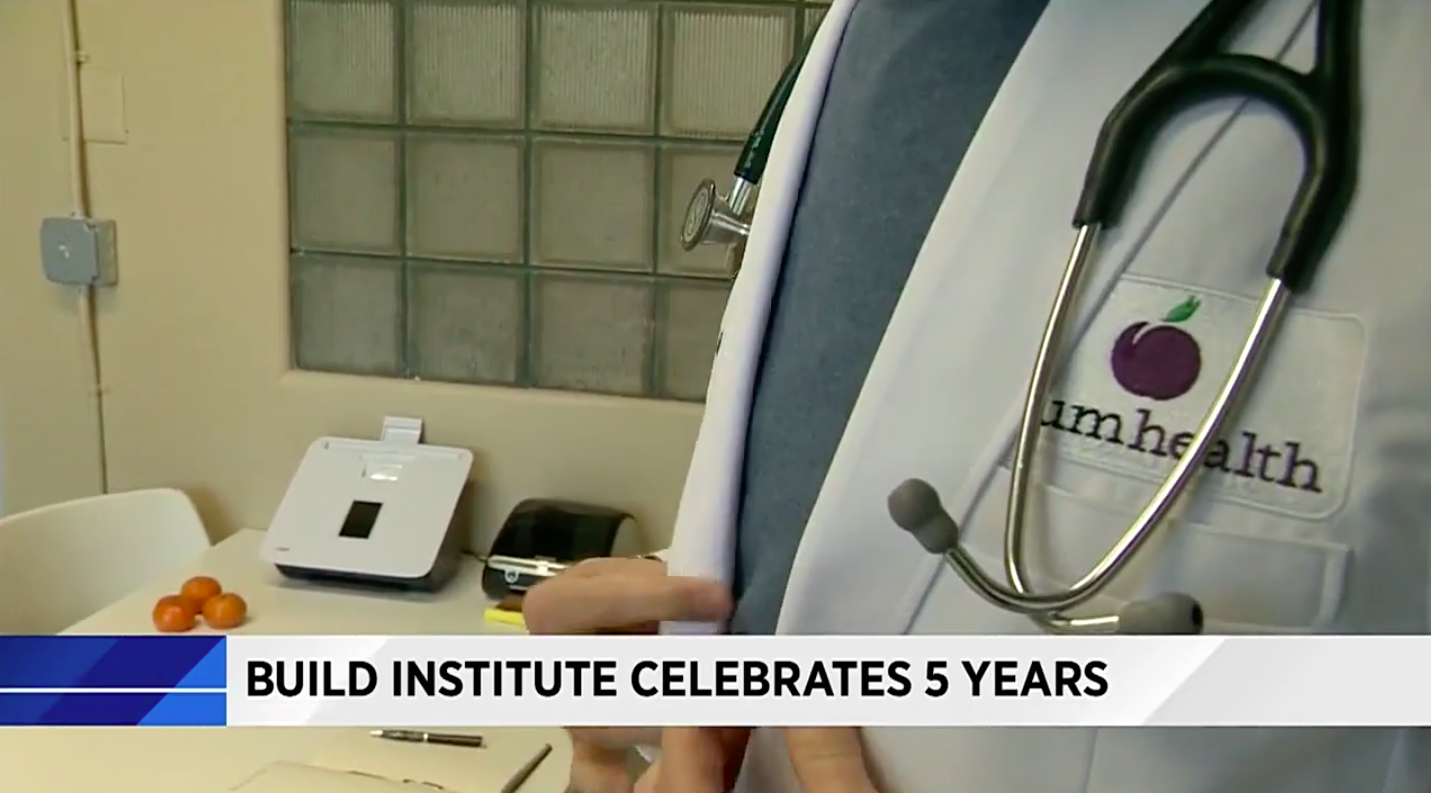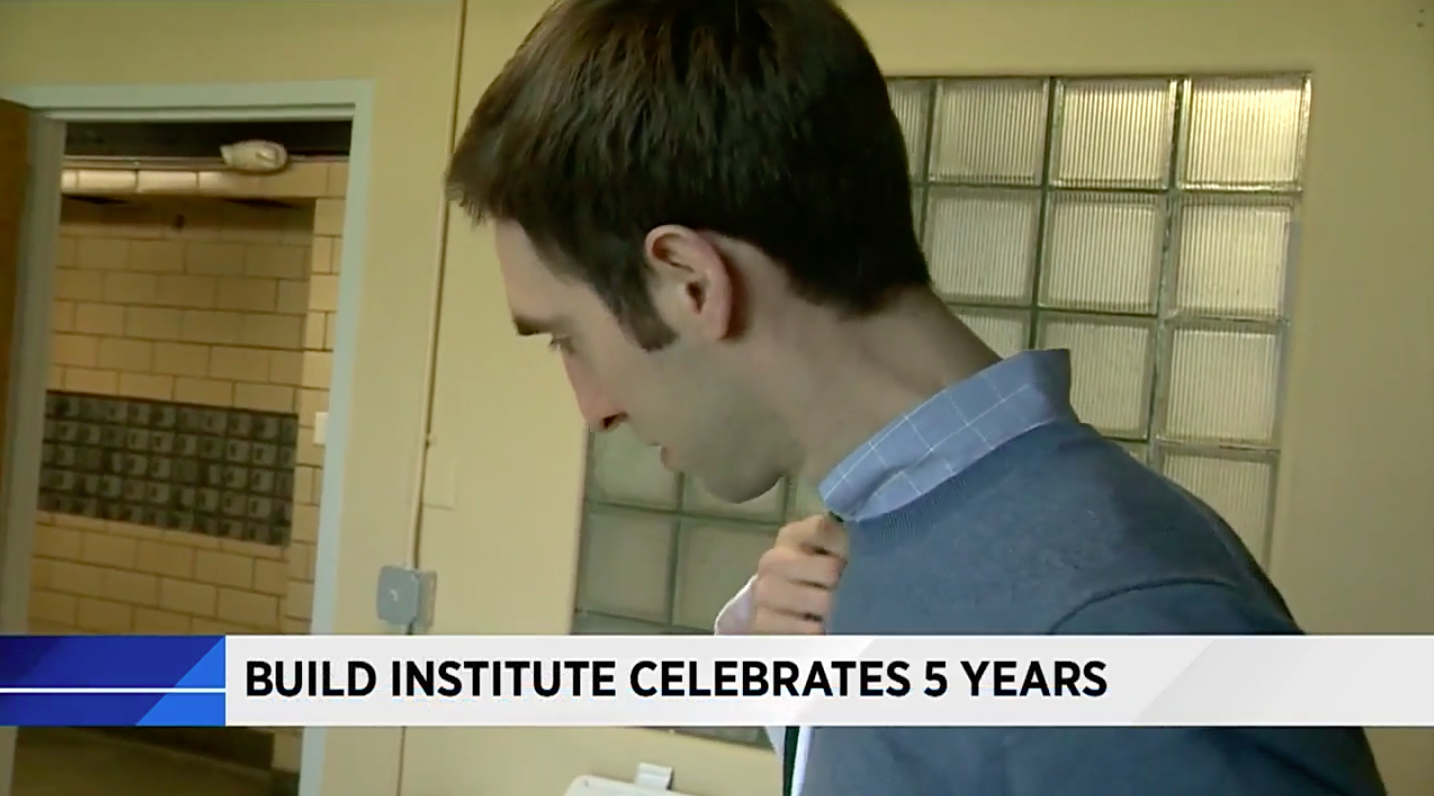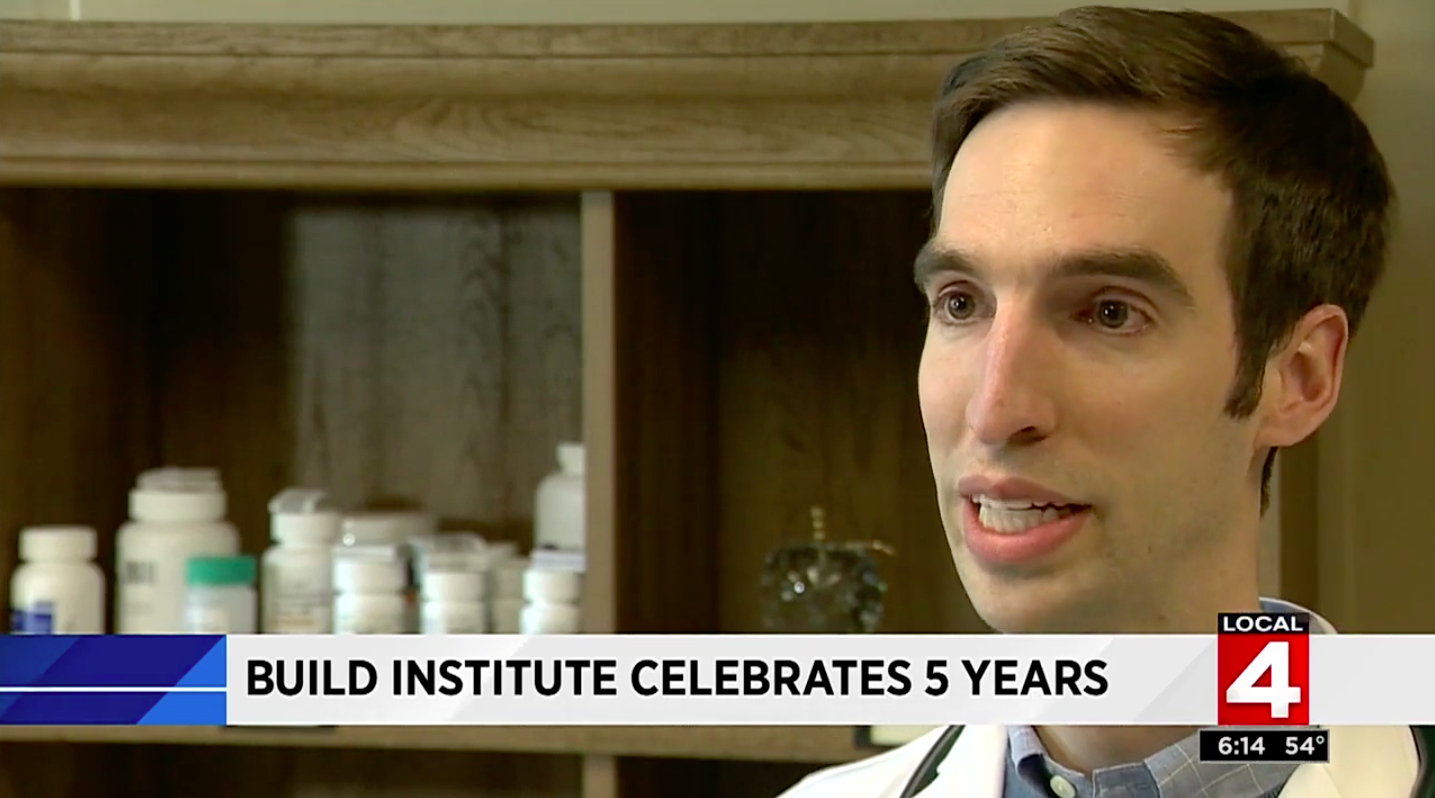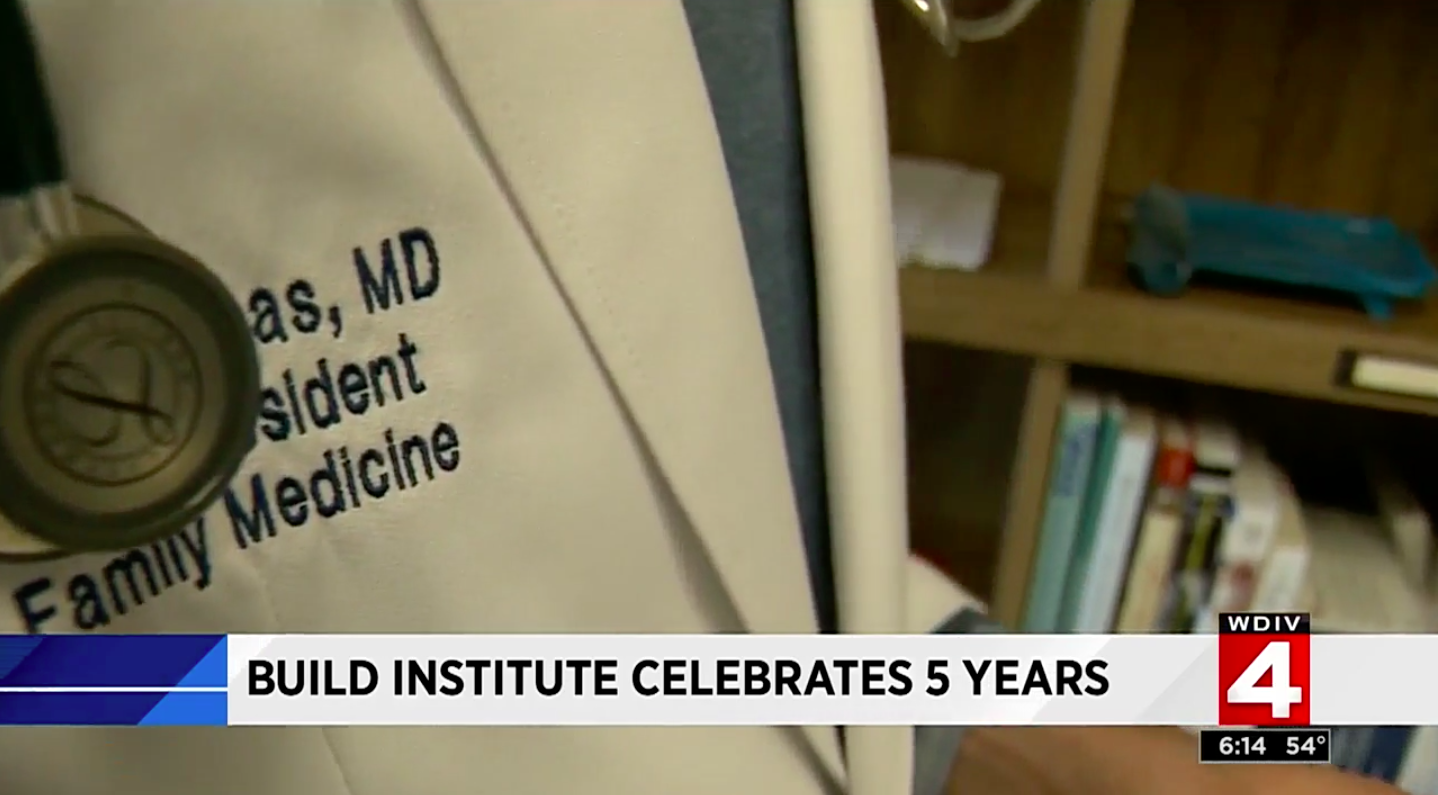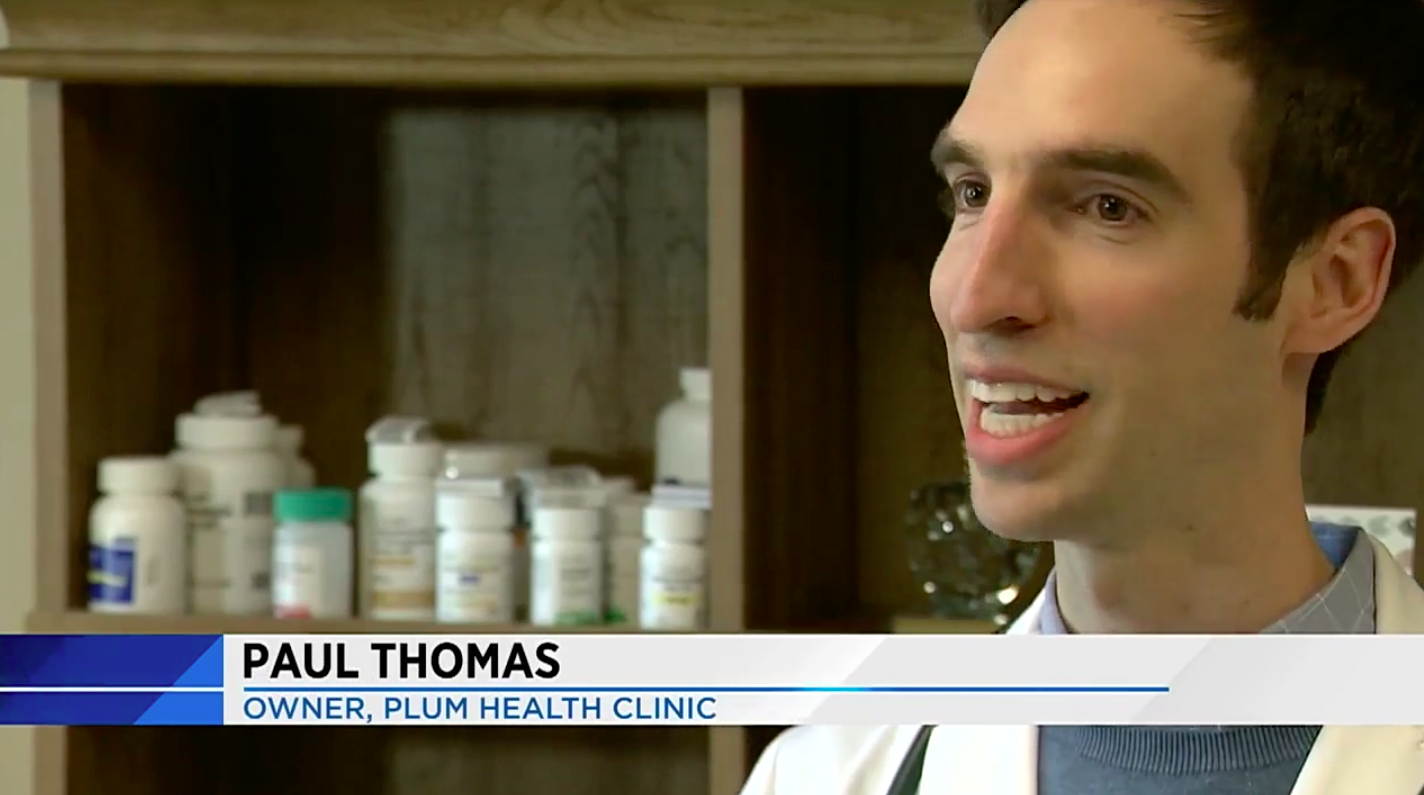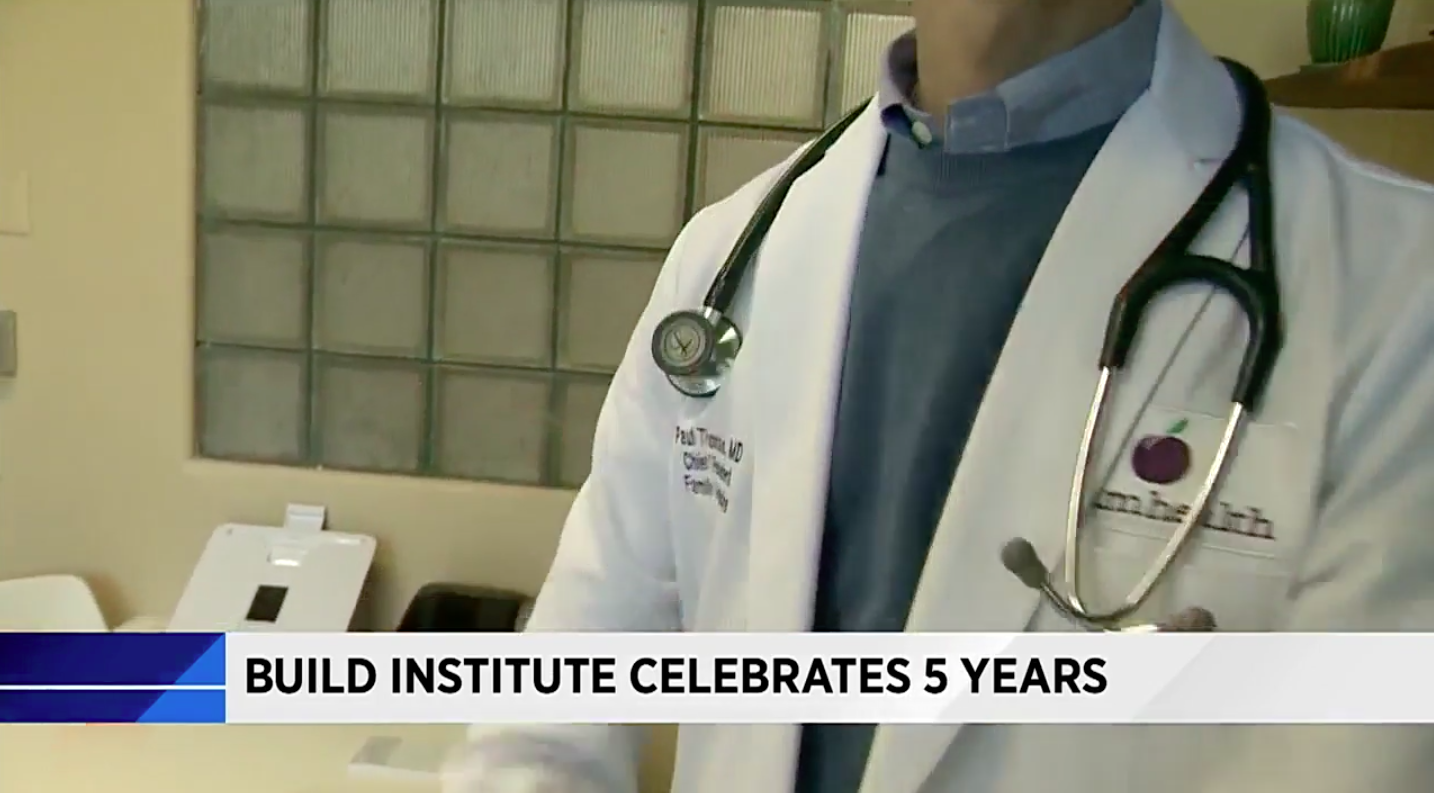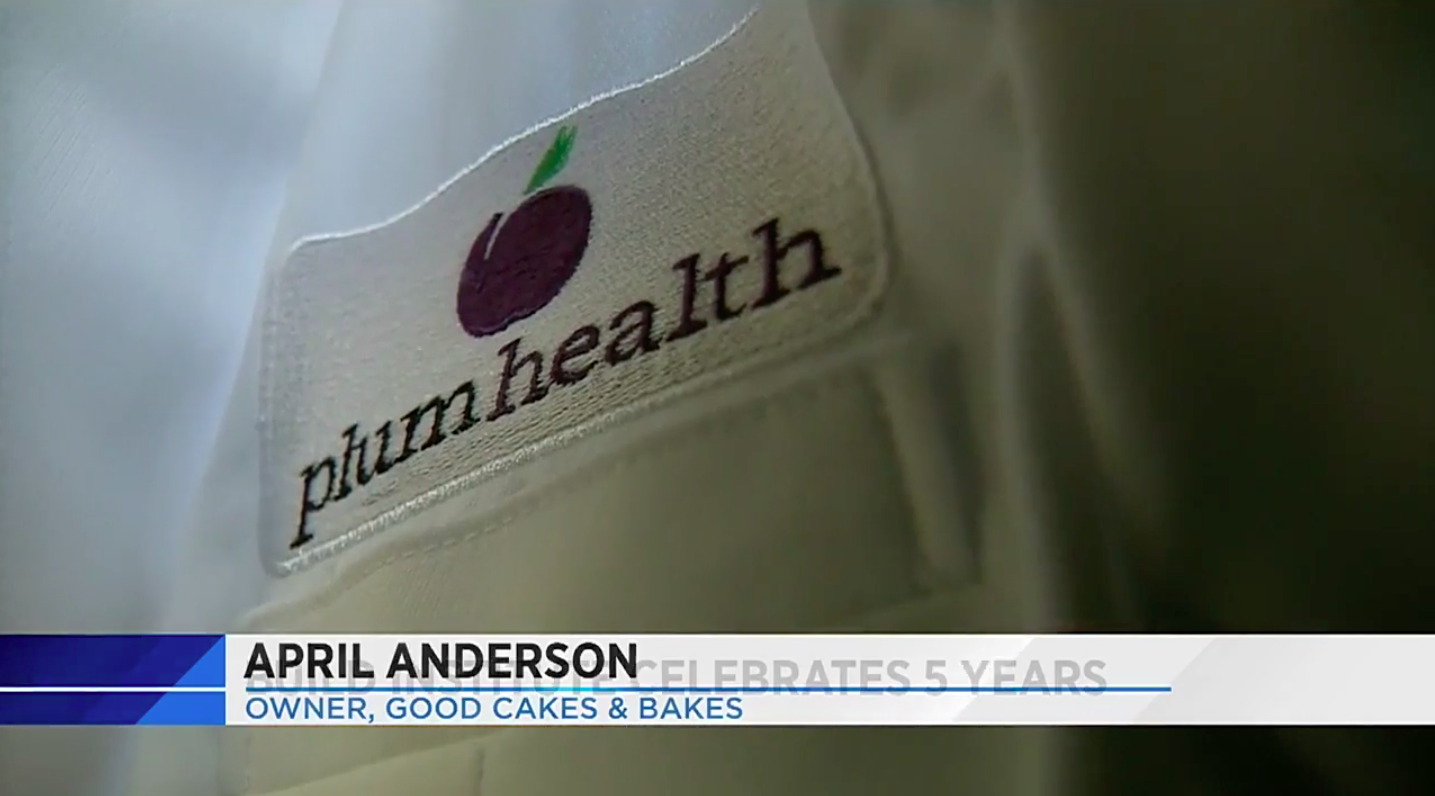Plum Health Blog
Plum Health DPC is a Family Medicine Practice in Detroit that is Accepting New Patients
Plum Health DPC is a family medicine practice in Detroit that is accepting new patients.
We have a family medicine clinic with three family medicine doctors and we are all accepting new patients into our practice. We see patients of all ages and stages and help our patients with a variety of medical concerns, like asthma, allergies, sleep apnea, depression, anxiety, diabetes, high blood pressure, hypertension, anemia, acid reflux, obesity, and so much more.
Three Excellent Family Physicians in Detroit Michigan Accepting New Patients
Detroit Primary Care Doctors Accepting New Patients
Paul Thomas MD, Raquel Orlich DO, and Leslie Rabaut DO are family medicine doctors accepting new patients in Detroit, Michigan. Their practice is called Plum Health and they see patients using a membership model for health care. Patients pay a low monthly fee to be a part of Plum Health, and with that membership, receive excellent primary care services.
Patients can come into the office whenever they want to be seen - we guarantee a same-day or next-day appointment for our Plum Health members. We also offer easy communication, with phone calls, text message, and email access to the doctors.
To see what all the buzz is about, you can enroll yourself, your family, or your small business into the Plum Health service via this link.
Thanks for reading and have a wonderful week!
The Doctors at Plum Health DPC are Raquel Orlich DO, Paul Thomas MD, and Leslie Rabaut DO. They are all board certified family medicine physicians and they are all accepting new patients.
Connect with Dr. Paul Thomas on LinkedIn
If you’d like to connect with Dr. Paul Thomas on LinkedIn, follow this link:
Dr. Paul Thomas Welcomes 300 New Medical Students to Detroit
Last week, Dr. Paul Thomas welcomed 300 new medical students to Wayne State University School of Medicine. Typically, the incoming students are packed into a large lecture hall at WSU SOM’s Scott Hall. But this year, due to Coronavirus, the event was held outdoors at Chevrolet Plaza, adjacent to the Little Caesars Arena. This open air venue accommodated 100 medical students at a time, and there were three “Welcome to Detroit” sessions throughout the day.
Dr. Paul Thomas gave a “Welcome to Detroit” lecture to the incoming medical students that emphasized the significant history and culture of the City of Detroit. There are so many opportunities for students to immerse themselves in service learning, by volunteering at local free clinics and by giving back to Detroit and the surrounding communities, by working with grade school students and the elderly, by volunteering at food banks and soup kitchens.
Dr. Paul Thomas shared a quote from Jeanette Pierce, “Detroit is big enough to matter in the world, and small enough for you to matter in it.”
Wayne State University School of Medicine Dean Margit Chadwell with Dr. Paul Thomas, MD, guest lecturer and Clinical Assistant Professor.
Coronavirus Update March 26th for Detroit Michigan: Can you be Immune to the Coronavirus?
Coronavirus Update March 26th for Detroit Michigan
The Coronavirus continues to spread in Michigan. As of today at 2 pm, the Michigan Department of Health and Human Services has reported that there have been 60 deaths and 2,856 cases. That is a mortality rate of 2.1% as of today.
The Coronavirus is concerning for so many reasons, but the two biggest reasons are the rate of transmission and the mortality rate. The Coronavirus spreads, on average, to 2.5 to 2.9 people once an individual is infected. Also, the global mortality rate has been in the 3 to 4% range. Compared to the Flu, these numbers are staggering. The Flu has a rate of transmission of 1.3 and a mortality rate of 0.1%. That makes the Coronavirus 30 to 40 times more deadly than the flu.
Below are the number of cases by Health Department here in Michigan and the number of deaths by Health Department. Detroit is within Wayne County, but it has its own health department, so those numbers are separate from Wayne County Cases.
How Many People Have Tested Positive and How Many People Have Tested Negative?
The State of Michigan today released their data regarding positive tests and negative tests.
30 of 744 outpatient tests have been positive, or a rate of 4.03% at the doctor’s office
1866 of 5261 hospital-based tests have been positive, or a rate of 35.4% at the hospital
557 of 3104 health department cases have been positive, or a rate of 17.9% at the health department
This tells us that if you’re well enough for your doctor to test you at the office and send you home, you are unlikely to have the Coronavirus. It also tells us that if you’re sick enough for your doctor to direct you to the hospital and you meet the testing criteria at the hospital (fever, cough, potential exposure), then you have a good chance of testing positive at 35.4%. This information can be found on the MDHHS Website.
Data from the Michigan Department of Health and Human Services showing the number of positive and negative tests in the State of Michigan as of 03/25/2020.
Hospital Beds are Filling up in Detroit
According to this article in the Detroit Free Press, the Beaumont Hospitals in Detroit and West Bloomfield are filling up with patients.
The health system is "facing limitations and nearing capacity with our testing, personal protective equipment and mechanical ventilators," said Beaumont Health Chief Operating Officer Carolyn Wilson. “We are taking steps to increase our capacity, such as converting some of our operating rooms into intensive care units.
“We have been actively transferring COVID-19 patients within our system to other Beaumont hospitals, as appropriate, if one hospital has more capacity than another."
According to this article in the Detroit News, Henry Ford Health System is facing the same challenges.
"Today our capacity is quite full at those two hospitals — West Bloomfield and Henry Ford Hospital in Detroit," said Dr. Betty Chu, associate chief clinical officer and chief quality officer. Chu is leading the health system's coronavirus response.
"We fortunately have the luxury right now of having additional capacity at some of our other campuses."
This is concerning because there are a limited number of staff, beds, and equipment to adequately are for Coronavirus patients here in the Detroit and Metro Detroit area.
As beds fill up and as our hospital personnel are stretched thin, we may be in a situation where doctors have to pick who lives and who dies simply based on issues of capacity. This is truly a terrible situation and one that we want to completely avoid.
That is why it’s so important to stay at home and avoid any unnecessary contact with people, by which you may become infected.
City of Detroit Will Begin Offering Free Coronavirus Testing Tomorrow
Unfortunately, the City of Detroit has been hit hard by the Coronavirus. But, Mayor Mike Duggan and the City of Detroit will begin testing people at the State Fairgrounds at 8 mile and Woodward to hopefully stem the tide. The aim is to test 50 people every hour and 400 people every day with this drive-through testing.
Testing is important because it can help us track the spread of infection and it can help people prevent the spread by self-quarantine if they find out that they are infected. You can learn more about this testing via the City of Detroit, here.
How Can I Become Immune to the Coronavirus?
Yes, you can become immune to the Coronavirus. When you get infected with the Coronavirus, your body will produce antibodies or immunoglobulins to the Coronavirus. First you’ll make IgM, and then IgG. This will confer long-term immunity to you.
Scientists estimate that you’ll be immune for 1 to 3 years based on previous infection and immunity rates from other Coronaviruses. This is why you can’t get re-infected by COVID-19. Once you have the virus, you’ll be immune to future infection.
This is important for several reasons. Over the next few weeks to the next few months, there will be a test of immunity. It will likely be a finger-stick blood test, using a drop of blood to measure the immunoglobulins like IgM or IgG to make sure folks are immune.
This will be especially important for doctors, nurses, hospital workers, and other critical staff. If we know that these folks are immune to Coronavirus, they can go back to treating patients with minimal risk of infection going forward. This test is pending as of now.
HOw will the Coronavirus Pandemic End?
The Coronavirus pandemic will end when we reach a Herd Immunity. Herd Immunity means that enough people in the population are immune to the Coronavirus, which will greatly limit its spread.
This Herd Immunity can be achieved in a few different ways. First, once a number of Americans get the Coronavirus, they will fight off the infection and become immune, limiting the spread of the virus once they recover. Second, once a vaccine is developed, many more people will become immune through vaccination.
Just like being vaccinated for the influenza virus or for Measles, Mumps, and Rubella, once you’re vaccinated for these viruses, your body creates immunoglobulins or antibodies to help protect you from infection from these viruses.
Unfortunately, the Coronavirus or COVID-19 vaccine will take 18 months to 2 years to develop, so this option will take a long time to achieve.
This image demonstrates Herd Immunity. The left hand panel shows what we’re dealing with right now with the Novel Coronavirus or COVID-19. No one is immune to this COVID-19 yet. The right hand panel shows Herd Immunity. The yellow figures are immune to the virus, so the spread of the virus will be limited. Herd Immunity defined: the resistance to the spread of a contagious disease within a population that results if a sufficiently high proportion of individuals are immune to the disease, especially through vaccination.
Thanks for reading and watching. Please stay safe and healthy in this time,
-Dr. Paul Thomas with Plum Health DPC
Detroit Doctor on AskASwimPro Show with Fares Ksebati
This week, I was invited on the AskASwimPro Show with Fares Ksebati. Fares is the CEO of MySwimPro, an App that helps swimmers improve their stroke, among other things. From their website:
MySwimPro is using technology to advance the sport of swimming and help swimmers all over the world achieve their goals in new and exciting ways. The platform is more than just an app, it's a community that keeps you accountable and pushes you to do your best.
In general, we had an informative discussion about the Coronavirus and its impact on our communities, specifically swimmers. Here’s what the MySwimPro team wrote about on their blog, found here:
In this episode of the #AskASwimPro Show, we interviewed Dr. Paul Thomas of Plum Health about the novel coronavirus, how to practice social distancing, the importance of “flattening the curve” and how swimmers can stay safe.
Dr. Thomas explained that many of us have had a coronavirus before, but that COVID-19 is more contagious. COVID-19 has a mortality rate of 3.5%, compared to the seasonal flu’s mortality rate of 0.1%, he says.
The virus spreads through coughing and inhaling someone else’s respiratory droplets. Due to this, Dr. Thomas explained that it isn’t wise to fly right now, since airplanes place you in close proximity to others.
He also noted that COVID-19 can live on surfaces for up to 3 days:
Stainless steel and plastic: 3 days
Cardboard and paper products: 24 hours
Copper: 4 hours
We go on to discuss social distancing:
Social distancing involves staying 6 feet away from others when you are outside, and avoiding contact with others while at home. You risk transmission any time you talk, shake hands or spend time around others. Dr. Thomas recommends that people avoid gathering with others and stay home in “self-quarantine,” noting that in cultures where it is common to kiss each other on the cheek or shake hands, COVID-19 can spread very quickly.
If you get COVID-19, you will be quarantined for at least 14 days, Dr. Thomas said. However, researchers have mentioned that you may be able to infect others for up to 20 days after showing symptoms.
We then discuss Flattening the Curve:
The healthcare system in the United States can only manage so many patients at one time, Dr. Thomas said. By practicing social distancing, we can “flatten the curve,” reducing the number of COVID-19 cases at a given time and keeping healthcare providers within their capacity. If we don’t do this, Dr. Thomas noted that the U.S. healthcare system will be unable to effectively care for patients.
We then talked about how you can stay safe during this Coronavirus Pandemic:
Dr. Thomas shared tips to stay safe and healthy:
Wash your hands: Before you prepare food, after going to the bathroom and before touching your face.
If you have a cough or a low grade fever (99 or 100 degrees Fahrenheit): Stay home, drink lots of fluids, take Tylenol and get some rest. You likely are not sick enough to benefit from a doctor’s treatment. Save the hospital beds — and the healthcare providers’ time — for those who are sickest!
If you have severe symptoms, such as a high fever and trouble breathing: Go to the hospital.
Thanks for reading and watching,
-Dr. Paul Thomas with Plum Health DPC
Do I have the Cold? Flu? or Strep Throat? Answers for People in Detroit Michigan
Do I Have the Cold, the Flu, or Strep Throat?
Dr. Paul Thomas and Dr. Raquel Orlich are family medicine physicians in Detroit Michigan. Their office is called Plum Health DPC and it’s located on Michigan Avenue in the beautiful Corktown Neighborhood of Detroit, MI.
Many people want to know if their sore throat, body aches, chills, fever, stuffiness, runny nose, or other symptoms are related to the cold, the flu, or strep throat. So, in this blog post and associated YouTube video, we’ll explore the differences between these clinical entities.
How Do I Know if I Have The Common Cold?
People with the common cold have a runny nose, a stuffy nose, congestion, sneezing, and a sore throat. Common cold viruses prefer to affect the back of the throat - these viruses have a predilection for the posterior pharyngeal tissues. This causes your mucus membranes to swell up, which causes fluid to leak out or what you experience as a runny nose or congestion, post-nasal drainage, etc… These symptoms tend to come on gradually.
For this viral pharyngitis or viral upper respiratory system or common cold, antibiotics are not indicated. Antibiotics do not work for the common cold, because the common cold is caused by a virus that mutates rapidly and is difficult to treat. Antibiotics are indicated for bacterial infections, like strep throat and pneumonia.
How Do I Know if I Have Influenza?
Influenza usually presents with extreme fatigue, muscle aches, and a fever. Sometimes we say that there’s an associated “pajama sign” - sometimes people are so weak and so tired that they can’t even change their clothes before coming to the doctor’s office, thus they come to the office in their pajamas. There can also be chest discomfort, chills, and a headache. There is often an abrupt onset to these symptoms. The symptoms of the flu are often more severe, and sometimes fatal unfortunately. This is why we worry more about the flu and why we recommend that everyone gets the flu shot.
If you are positive for an influenza infection, treatment with oseltamivir (Tamiflu) should be started within 24 to 48 hours of your symptoms. It must be started within this timeframe to be effective in shortening the duration of flu symptoms and decreasing the severity of the flu virus.
It’s the Middle of February - Will the Flu Shot Still be Effective?
Yes. We’re still in the influenza season, and the flu shot has been shown to be 40 to 50% effective in preventing the influenza virus from taking hold. So, we strongly recommend getting the flu shot if you haven’t done so already. The flu shot costs $20 at our office and about that price at most pharmacies ($15 - $30). And it’s very important to get the flu shot, not only to protect yourself, but also to protect your loved ones. If you get the flu shot, you’ll be less likely to transmit the flu to a more vulnerable person in your life, like a newborn in your family or circle of friends, or an elderly relative or elderly neighbor. Getting the flu shot helps to protect these more vulnerable people with less strong immune systems from getting the flu.
How Do I Know if I Have Strep Throat?
When people come to our office concerned about a sore throat, it’s hard to tell if it’s a viral pharyngitis or if it’s strep throat (a type of throat infection caused by a bacteria). Strep throat is an infection of the tonsils in the back of the throat by a bacteria, Group A Streptococcus. The “strep” in strep throat comes from a shortening of the bacteria name, Streptococcus. The strep bacteria infects the tonsils and causes localized pain and swelling as well as purulent discharge, ie a discharge of pus from the tonsils.
There’s also a diagnostic criteria for Strep Throat called the Centor Criteria. You get a point for having each of the following symptoms:
fever
tonsillar exudate (pus coming from the tonsils)
absence of a cough (no cough)
anterior cervical lymphadenopathy (swollen and often tender lymph nodes in the front part of the neck)
age younger than 14 years
Kids with a sore throat are more likely to have Strep Throat because they have larger tonsillar tissue when they’re younger. As people age, the lymphatic tissue, like tonsils, shrink in size. This makes it less likely for adults to get strep throat. Of note, the tonsils are like a sponge and they take up large amounts of bacteria and viruses and show it to the rest of our body to make sure that our immune system can respond appropriately to these foreign invaders.
Because Strep Throat is caused by a bacteria, it is appropriate to use antibiotics for this condition. We often use Amoxicillin 500 mg for adults and Amoxicillin with weight-based dosing for children. Fortunately, we carry this inexpensive medication in our office, which is convenient for our patients with Strep Throat.
I live in Detroit, Am I more likely to get the flu or the coronavirus?
You are much more likely to get the flu than the coronavirus if you’re living in the United States.
As of 02/21/2020, there have been 34 documented cases of the Coronavirus in the United States.
Now compare that to the flu or the influenza virus. According to the Centers for Disease Control and Prevention, there have been:
29,000,000 to 41,000,000 flu illnesses
13,000,000 to 19,000,000 flu medical visits
280,000 to 500,000 flu hospitalizations
16,000 to 41,000 flu deaths
We know that the Coronavirus is scary because it’s new and different, and coming from a foreign country. However, the best thing that you can do to prevent getting sick this year is to wash your hands, cover your cough, don’t share drinks or eating utensils, stay home from work when you’re sick so you don’t infect other people, and get your darn flu shot.
Thanks for reading and thanks for watching
-Drs. Paul Thomas MD and Raquel Orlich DO of Plum Health DPC
Detroit Family Medicine Office Offers Affordable In-Office Procedures
Detroit Family Medicine Office Offers Affordable In-Office Procedures
The beauty of Family Medicine Practice is it can be a one stop shop for you and your medical care. Family doctors can usually take care of 80-90% of your medical needs and that includes medical procedures. Family doctors are trained to perform a wide variety of procedures that can be offered in the office. This can help you save time and money from sending you to a specialist. At Plum Health, we love taking care of procedures for our patients, these can range from Pap tests to biopsies, from toenail removal to earwax removal, from abscess drainage to lipoma removals.
Our patient cut his hand aka had a laceration, and we were able to sew up the cut (suture the wound) about 20 minutes after the incident happened. This can ensure that healing is optimal and scar tissue is minimal.
List of Common In-Office Procedures Performed by Family Medicine Doctors
Some of the procedures that Family medicine physicians can perform are listed below.
Procedures that can be performed by your Family Doctor
Wound repair (sewing up small to medium sized cuts)
Abscess and cyst drainage
Skin biopsy of moles
Steroid Injection of joints and trigger points
Electrocardiogram (EKG)
Pulmonary Function Test
Pap smear
IUD (intrauterine device) removal
Ingrown toenail removal
Wart removal
Foreign body removal
Osteopathic Manipulative Medicine
Cerumen Disimpaction (ear wax removal)
With a flick of the wrist we can remove a significant amount of cerumen (ear wax) that may be impairing your hearing. There is no charge for this cerumen disimpaction procedure in our office.
Unfortunately, some of these procedures can be very costly depending on your insurance plan or lack thereof. A major reason for the expense of procedures vary from your insurance deductible plan and insurance coverage. Usually, the doctor’s offices will charge the insurance companies for the procedure. This inflates the cost.
For example, a typical charge for a sebaceous cyst removal might be $175 - $350. That service is $20 in our office. A skin biopsy can cost anywhere from $150 - $1,000 and an IUD removal can cost $150 - $250. For these procedures, we typically charge about $20 or the cost of the supplies that we use to perform these procedures.
Why are Common In-House Procedures Less Expensive at Plum Health?
At Plum Health DPC, we do not use or bill insurance for your medical care. Our membership plan does include performance of some procedures which helps cut many costs. We may be subject to charge for utensils and medications used during the procedure which is also offered at a discounted price.
Because the patients in our practice pay a monthly membership fee, we can lower the cost of procedures. Instead of charging you or your insurance company $100 or $500 for a procedure, we ask that you pay for the cost of the supplies that we use.
How to Schedule an Appointment to have a Procedure at our Detroit office
To make an appointment with Dr. Raquel Orlich or Dr. Paul Thomas, head over to our scheduling link. After you submit the information, Dr. Raquel or Dr. Paul will reach out and offer appointment times.
Thank you for reading and have a great day,
-Dr. Paul Thomas and Dr. Raquel Orlich
Plum Health teaming up with Veterans Care Network
Plum Health teaming up with Veterans Care Network
Plum Health DPC is teaming up with Veterans Care Network to provide affordable, accessible healthcare services to those who have served in the military. Veterans Care Network has set aside some funding to sponsor a few Veterans and help them receive primary care services. They chose to use Direct Primary Care because they know how valuable the services in the DPC model can be.
Plum Health DPC Serves Veterans in Detroit
At Plum Health, we’re passionate about serving veterans and providing excellent healthcare services to all people, but especially those who have served our country. One of the biggest concerns that my patients who are Veterans have is the level of customer service at the Veterans Administration hospital. We rectify that issue by focusing our care on the patient and making sure that they not only have excellent healthcare, but also an excellent experience.
We’re excited to partner with Veterans Care Network, and if you’d like to apply for this opportunity, follow this link.
Thanks for reading and have a wonderful day,
-Dr. Paul Thomas with Plum Health DPC
What is a Plum Health Membership?
What does it mean to be a member of Plum Health dpc?
What’s involved in being a member of Plum Health DPC? We hear this question often. So, it’s worth taking some time to address it head on. Plum Health is a family medicine service run by Dr. Paul Thomas. Our mission is to deliver affordable, accessible healthcare. We are unlike other offices in several ways. We highly value the doctor-patient relationship and we routinely spend thirty minutes to one hour with each of our patients per visit.
This time together is essential because it allows us to build a trusting relationship. When you’re a member of our practice, when you’re a member of Plum Health DPC, you have the opportunity to build this trusting and healing relationship with Dr. Paul Thomas over time.
In contrast, at a typical family medicine office in the fee-for-service or insurance-based system, doctors prioritize seeing as many patients as possible to increase their payments from insurance companies. This is why you may only have five to twelve minutes with a primary care doctor in the insurance-based system.
Committed to a long-term relationship between doctor and patient
Being a member of Plum Health means that you’re committed to being a part of the membership model. If you’re looking for a one-off visit or one-time services, Plum Health probably is not the right fit for you. However, if you’re looking for a dependable physician who is responsive to your calls, texts, and emails at anytime of day, who cares about you as an individual and not as another number, then Plum Health DPC will be a great fit for you.
Furthermore, we love taking care of people who believe what we believe - that health care should be individualized, that the doctor-patient relationship should be strong and seamless, that health care should be affordable and accessible. If you value these tenets like we do, then we’d love to have you as a part of the Plum Health DPC membership.
How much does a plum Health DPC membership cost?
A membership with Plum Health DPC costs $10/month for children, and starts at $49/month for adults. We have our full pricing structure here. With that membership, you can visit the office anytime without a copay. You also can call, text, or email the doctor anytime. Additionally, members of Plum Health DPC are able to get wholesale medications, at-cost labs, and at-cost imaging services at a fraction of the typical cost.
How do I sign up for a Plum Health DPC membership?
The signup process for Plum Health DPC is an easy one. Our online form takes about 5 minutes to complete. The form will ask for a credit card to complete the registration. Your card will not be billed until your account is confirmed by our staff and an appointment is made. We want to make sure you’re a good fit for our practice before we start billing you for the service.
Thanks for reading and for watching, and have a wonderful day.
Dr. Paul Thomas with Plum Health DPC
Paul Thomas MD Speaking at Michigan State University
This week, I was invited to speak at Michigan State University College of Osteopathic Medicine regarding Direct Primary Care. It was a neat experience because the school has three campuses and my lecture was simulcast to the other two campuses. I spoke at the Detroit location (did you know that Michigan State University has a medical school campus in Detroit?) and the talk was broadcast to the East Lansing and Macomb campuses.
The lecture was an hour, and in the first 45 minutes I discuss the current crisis in primary care, I define Direct Primary Care, and then I give real-world examples of how Direct Primary Care is working in our clinic in Southwest Detroit. During the last 20 minutes, I answered as many questions as I possibly can.
I love speaking with students about our healthcare system and about Direct Primary Care because I see the lightbulb go off - I see them ‘get it’ and understand the model and why it works well. I love witnessing that moment - the “aha” moment.
A few students bought my book about Direct Primary Care after the event and the pictures below are of me signing the book. Thanks for reading and have a wonderful day.
-Dr. Paul Thomas with Plum Health DPC
Get your copy of the book, Direct Primary Care: The Cure for Our Broken Healthcare System
Signing a book for one of the Michigan State University College of Osteopathic Medicine Students.
Dr. Paul Thomas MD of Plum Health DPC signing the book, Direct Primary Care: The Cure for Our Broken Healthcare System after a speaking engagement at Michigan State University College of Osteopathic Medicine in Detroit, Michigan.
Dr. Paul Thomas at the Future of Family Medicine Conference
Last month, I had the opportunity to speak with over 100 students and residents interested in the specialty of Family Medicine. This was at the aptly named “Michigan Future of Family medicine Conference” hosted by the Michigan Academy of Family Physicians. The event was held at Michigan State University and hundreds of students were able to attend on a Saturday morning in October.
The invitation for the fifth annual Michigan Future of Family Medicine Conference, hosted by Michigan State University and the Michigan Academy of Family Physicians (MAFP).
For students, it can be hard to get excited about the future of Family Medicine. Family Physicians work long hours, have to deal with tons of insurance bureaucracy and red tape, and earn less than their colleagues in other specialties. It can leave students deflated.
Dr. Paul Thomas of Plum Health DPC speaks at the Michigan Future of Family Medicine Conference 2018 Panel on Career Options, taken from the Michigan Academy of Family Physicians’ (MAFP) twitter account, here: https://twitter.com/MIFamilyDocs/status/1051106817705725953
However, I find that when I speak about Direct Primary Care and the opportunities that a DPC model of care can provide, students are energized and excited about the future of family medicine. You see, Family Medicine Doctors have the most tools in their tool set and can have the biggest impact on the community level - we lower admission rates to hospitals and decrease the cost of care for our patients. We also lower the rates of disease and death rates from disease.
But, as mentioned previously, Family Medicine is less desirable from the student’s perspective as it pays less and is a difficult job because of insurance hassles.
I think our profession, Family Medicine, is at a real moment of crisis, but also at a crossroads for opportunity. We can continue to be a part of the healthcare industrial complex, billing and coding, racking up charges on our patients, or we can adopt the Direct Primary Care model and serve our patients and our community with affordable and accessible health care services that are more just and compassionate in their delivery.
That’s my message, I’m glad to have had the opportunity to share it, and I’m very happy to have seen it resonate with so many energetic and eager medical students and residents.
Thanks for reading, and have a wonderful day,
-Dr. Paul Thomas, MD with Plum Health DPC, a Direct Primary Care service in Southwest Detroit
Dr. Paul Thomas of Plum Health DPC speaks at the Michigan Future of Family Medicine Conference 2018 Panel on Career Options, taken from the Michigan Academy of Family Physicians’ (MAFP) twitter account, here: https://twitter.com/MIFamilyDocs/status/1051097050086035456
I had the pleasure of speaking to an audience of over 100 + Medical Students and Medical Residents at the Michigan Future of Family Medicine Conference in October 2018. I shared the stage with Dr. Sheala Jafry, Dr. Fatin Sahhar, and Dr. Amy Keenum. The event was held at Michigan State University and hosted by the Michigan Academy of Family Physicians (MAFP).
Plum Health DPC on Channel 7 Action News Detroit
Plum Health DPC on Channel 7 Action News Detroit
This week, our clinic Plum Health DPC was interviewed by the journalists at Channel 7 Action News in Detroit. The piece will be airing on Monday September 24th at 11 pm, after the season 2 premiere of “The Good Doctor”. This will air on Channel 7 in the Greater Detroit television market.
I was very impressed by the depth of questioning and level of examination our Direct Primary Care practice received during the course of the filming and interviewing. The journalists at Channel 7 WXYZ Detroit did a phenomenal job of learning about our practice and what makes us unique.
They went into great detail about the membership pricing, the wholesale medications, at-cost labs, and at-cost imaging services. I came away with a greater understanding and appreciation for how much work goes into each and every segment that we watch on the local news and I am so excited to see the final piece, tonight at 11!
Thanks for reading and watching, teaser trailer after the break,
- Dr. Paul Thomas, MD with Plum Health DPC in Detroit, Michigan
To make an appointment, call 313.444.5630. To enroll online, go to this link. To learn more, check out our main webpage.
Full Video from WXYZ Channel 7 News Featuring Dr. Paul Thomas of Plum Health DPC.
Video trailer of the WXYZ Detroit Channel 7 News Clip featuring Dr. Paul Thomas of Plum Health DPC:
Healthy Aging in Detroit
Let me tell you about one of my favorite things: educating people in the community about how they can be healthier.
Today I was invited to the Earnest T Ford Recreation Center at 10 Pitkin Street in Highland Park to speak with a group of older men. They had questions and concerns about their health and their health care, and it was a pleasure speaking with them.
This group of senior citizens wanted to know how they could better their lives, and they peppered me with as many questions as they could think of, and I loved it. I love sharing my knowledge as a practicing family medicine doc with the people in my community.
I especially enjoyed seeing the 'aha!' moments when things started to click with those men in my audience. We talked about high blood pressure, diabetes, erectile function and dysfunction, the aging brain, exercise, osteoporosis and bone health, and the connections between these conditions. Below are some pictures from the event!
Thanks for reading, and have a wonderful day,
- Dr. Paul Thomas with Plum Health in Detroit, MI
Mentoring Students at Wayne State University School of Medicine
Part of my mission, part of the "why" behind what I do, is to educate medical students and inspire them to choose a career in primary care specialties. Primary care doctors have the greatest impact on their communities, have the most tools at their disposal, and are most able to bend the cost curve in the health care ecosystem.
As a part of that mission, I spend a good amount of time interacting with medical students at Wayne State University School of Medicine (WSUSOM). This week, I took part in two different events at WSUSOM. The first was a mentoring session for first year students and the second was a mock interview session for the fourth year students.
For the first year students, it's an opportunity to get to know each other, learn from each other, and to be a resource. For the fourth year students, it's an opportunity to help them polish their interviewing skills as they prepare for the next step in their careers - residency!
This next generation of doctors will face significant changes and challenges in the health care system - from greater automation, to precision medicine, to even Artificial Intelligence. I hope that I can be a part of the foundation along with their formal education at WSUSOM that sets them on the right path to success in medicine.
Thanks for reading, and have a beautiful day,
- Dr. Paul Thomas with Plum Health DPC
Motivation to Quit Smoking
We are all on a journey, and at Plum Health we like to guide people to better lifestyle choices. For example, if you're trying to quit smoking, we can help you by reminding you of your commitment.
How do we do this? It's really simple, actually. We just send you a text message! Here's a real life example, sent to one of our members last week:
These are real text messages, and this is a real patient. Their name has been removed for patient privacy sake, but you get the idea. When you're a part of Plum Health, you are someone who I think about and that I care about and that I want to help. Sincerely, whenever I think about this person, I send them a text and ask - "how's it going?"
And, there is a great deal of evidence to support these types of interventions. There is a systemic review/meta analysis on Text Messaging-Based Interventions for Smoking Cessation in the Journal of Medical Internet Research that came to this conclusion: "The current meta-analytic review provides unequivocal support for the efficacy of text messaging interventions for smoking abstinence."
That's why I send messages like this:
Further, texting patients about their health can have different applications. For example, a text message to a patient regarding their exercise patterns or medication adherence can help them to achieve their goals.
So, what's your goal? How do you want to become healthier? Can I help you get there?
Thanks for reading, and have a great day!
- Dr. Paul with Plum Health
Plum Health featured in Good Life Detroit
This week, Plum Health DPC was featured on the blog Good Life Detroit. Jennifer is the creative spirit behind Good Life Detroit, and she did a fantastic job writing about our clinic and Direct Primary Care in general.
I really appreciated her perspective as a mother - she notes in the article that she has 5 children! - and that she paid $125 for a 20 minute doctor's visit for one of her children. Contrast that with our clinic, her child could have been seen for a full year for $120, with as many visits as needed included in that price.
This is how we make our primary care services valuable for the community that we serve. If you were not aware, Detroit is a large, low-income population. We recognize this as a fact, and have adjusted our pricing to be accommodating for the community that we serve.
Another great point that she brought up in the article is the frustration that people can experience when trying to reach their doctor! Sometimes reaching the doctor can be like pulling teeth. She puts it more eloquently, here:
"Another great benefit of Plum Health Direct Primary Care is patients have the opportunity to speak directly to Dr. Paul without the hassle of long wait times and call screenings. Instead of having to go through a series of steps just to talk to their doctor, patients can call, text, or email Dr. Paul directly. In some cases, some doctors require you to leave a message with the office staff for a callback.
"Most of the time the office staff member screen’s the doctor’s calls and you have to tell the staff member exactly what it is you need or what your question is. Then you wait for the doctor to call you back, which can be anywhere from the same day or one to two days later, all depending on the doctor’s schedule.
"Members of Plum Health have Dr. Paul’s cell phone number and email address. They can reach him anytime they need to ask a question in regards to their health."
There are several other great points that she makes throughout the article. I was really impressed at her depth and thoroughness. I also appreciate her helping to get the word out about affordable, accessible health care in #Detroit. We're trying to serve as many folks who need this type of care, and articles like these help us to reach communities outside of our circle of influence.
Thanks for reading and have a wonderful day,
Dr. Paul Thomas with Plum Health Direct Primary Care
Plum Health Direct Primary Care is in Detroit, Michigan. We practice old-fashioned family medicine, but we use technology to make ourselves more accessible to our patients when they need us! I love this graphic that Jennifer at Good Life Detroit created for us!
I also really liked this graphic that Good Life Detroit made about our pricing tiers at Plum Health DPC - really easy to read and understand!
Primary Care Clinic in Detroit
When I was a first year medical student, I worked with a group of my fellow medical students to build an outdoor medical clinic. We wanted to raise awareness about the lack of primary care services in Detroit, and we accomplished this by constructing an outdoor medical clinic.
Currently, there are roughly 50 - 100 primary care doctors in the City of Detroit. This equates to about 1 primary care doctor for every 6,000 - 12,000 residents, which is horribly underserved. In the future, I would like to see 1 primary care doctor in every single Detroit Neighborhood, from East English Village to Ford/Wyoming, from Old Redford to Lafayette Park.
Having community primary care doctors creates a tremendous amount of value for the surrounding neighborhood - that doctor becomes a go-to person for folks who need health care and even emotional support.
However, the current reality in Detroit is that folks either don't have access to a primary care doctor or are driving to the suburbs for their care. To illustrate that lack of primary care services, our group of medical students built an outdoor clinic as a part of the Heidelberg Project on Detroit's East Side or what you may call the McDougall Hunt Neighborhood. Of course, we had the approval of Tyree Guyton, who checked in on our work that day, and we also received some press from the Detroit Free Press and the Wooster Collective out of NYC.
It was a simple clinic, with a reception desk, a door frame, a door, an exam table, and some chairs. On the door, we wrote all of the barriers to accessing health care services in Detroit and in the Nation. This was in 2009, when the debate over the Affordable Care Act was raging.
I visit the location periodically, to see how it has changed over the years. The last time I visited the site was in September 2016 during the Tour de Troit, an annual bicycling event that takes riders around the city. Someone had added a skeleton and some body parts, and it looks like Tyree made his signature drawings of faces on our plexiglass wall.
Plum Health may be in its infancy, but I know that we are already filling a need in the community in terms of primary care services. We recently surpassed 100 members and continue to grow, adding new members each week. We've taken care of newborns, toddlers, teens, and adults, and have addressed conditions ranging from sore throats to cancer.
As I continue to serve in the community, I hope to live up to the ideals that I put forth in this work of public art, to be the kind of community doctor that addresses the lack of access to health care in Detroit. I will also work to inspire the next generation of Family Physicians to take the leap into private practice in a community-based setting.
Thanks for reading, and have a wonderful day,
Dr. Paul Thomas with Plum Health DPC
Common Criticisms of Direct Primary Care
In this blog post, I'm going to list some common criticisms to Direct Primary Care and my responses to these criticisms.
In a traditional family medicine practice, each doctor typically sees a panel of 2,500 patients. If each patient comes in twice each year, that means roughly 100 visits each week, assuming that the doctor works 50 weeks each year, or roughly 20 visits each day. In Direct Primary Care, doctors reduce their clinic panel to 500 patients. Now, if each patient visits twice each year, the doctor will see 20 patients each week, or 4 patients each day. If each patient visits three times each ear, the doctor will see 30 patients each week, or 6 patients each day. This allows the doctor to spend up to an hour with each patient and use the remaining time in their schedule to answer phone calls, texts, and emails as well as handle the administrative duties that go along with running a Direct Primary Care practice.
The biggest criticism of doctors who switch from a traditional or fee-for-service practice to Direct Primary Care is this notion of patient abandonment. This means that if the doctor cuts down their practice from 2,500 patients to 500 patients, there will be 2,000 patients that are "abandoned" or without primary care services.
My response to this is simple: I will no longer perpetuate a bad system. In the current fee-for-service system, patients do not have enough time with their doctor for a thorough evaluation, for all of their questions to be answered, and to feel truly cared for. In the current fee-for-service system, doctors are rushing from room to room to room and are unable to provide the kind of high-quality care that their patients deserve,
In the current system, primary care doctors are marginalized and devalued, predisposed to burn out and leaning towards early retirement. Younger medical students see their burnt-out, grumbling, and overstretched attending doctors in Family Medicine and choose not to become primary care doctors in the first place. Why earn less than other specialties in a field that is less-than fulfilling?
Direct Primary Care doctors are fighting to make primary care relevant again, to restore the doctor-patient relationship, and to create value for patients in a way that the current fee-for-service system cannot.
There's an old adage: "take care of yourself so you can care for others", and it's something that primary care doctors have forgotten about. The expectation of the system is that we should work hard, keep our heads down, and not question the health care administrators who send an overwhelming volume of patients into our clinics each day.
But when we begin to sacrifice the quality of our work simply because we don't have enough time, it's time to take a stand and re-think our practices.
This brings me to the next criticism: how many conditions can a primary care doctor really treat? aka how much coverage can a family medicine doctor really provide?
When a well-trained family medicine doctor is able to practice at the top of their training, they are able to manage between 80 and 90% of all patient concerns. From sore throats, to blood pressure management, Pap tests, skin biopsies, abscess drainage, diabetic management, and beyond, family medicine doctors are able to care for a broad and diverse range of conditions.
The secret sauce in Direct Primary Care is the amount of time we are able to spend with our patients. If I have an hour, I can use it to drain an abscess, to talk about the efficacy of your antidepressants, to draw your blood for the lab work you need, to remove that ingrown toenail, to fully evaluate your vertigo, to evaluate your child's Vanderbilt scores for ADHD, to dispense the necessary medications and more.
In the current fee-for-service system, the expectation is that primary care doctors perform a cursory evaluation and then make a referral to a specialist. In the Direct Primary Care model, primary care doctors have more time to address concerns to the fullest of their training. And if that specialty referral is necessary, Direct Primary Care doctors have enough time to personally manage the transition of care, to make the follow up phone call and to get a full picture of what happened during that referral.
To summarize, Direct Primary Care doctors who leave the traditional fee-for-service system are not abandoning their patients. Rather, they are now free to practice medicine to the best of their ability by having enough time to give high-quality, thoughtful, and comprehensive primary care services to their patients. This will allow burnt out doctors to stay in practice for a longer period of time and it may inspire the next generation of medical students to choose primary care.
Thanks for reading, and have a wonderful day,
- Dr. Paul Thomas with Plum Health Direct Primary Care
Plum Health at Build Institute
This week, I was invited to sit on a panel at the Build Institute to celebrate their 5th year of investing in and uplifting small businesses in the City of Detroit. Fortunately, I was able to take and graduate from a Build Institute course over the summer of 2016.
This Build Institute Course allowed me to develop and solidify my business plan, make connections with fellow entrepreneurs, and tap into Build's ever-expanding network of small business owners and service providers. Through Build, I was able to be a part of big events like Detroit Homecoming sponsored by Crain's Detroit. I was also able to meet future customers and future service providers like my lawyer.
On Wednesday, I was invited to sit on a panel of small business owners who have benefitted from the Build Institute's unique programming. It featured Lana Rodriguez of Mama Coo's Boutique, April Anderson of Good Cakes and Bakes, April Boyle of Build Institute, and Christianne Malone of Build Institute.
After the panel, Steve Garagiola of Local 4 News (WDIV) asked if I'd be interested in an interview. I invited him to my office at 1759 West 21st Street, Detroit MI, and he came over with his cameraman. During the interview, we discussed the basics of what we provide at Plum Health DPC.
I was surprised at how fast the turn around time was for the interview, as it aired during the 6 pm news on Detroit's Local 4 News. In case you missed it, here's the interview!
In addition, Kurt Nagl, a writer from Crain's Detroit wrote an article about the event and it appeared on their website on Tuesday.
Thanks so much for reading and watching!
- Dr. Paul with Plum Health DPC
Match 2017 at Wayne State University School of Medicine
This week, I was happy to hear about the highly successful match at my alma mater, Wayne State University School of Medicine. On Friday, March 17th, WSU SOM matched 97.3% of its graduating seniors into residency programs! This rate is much higher than the national average of 93%. In addition, 40% of those new doctors will be training in primary care specialities.
This is one of the points that I continue to emphasize: we need more primary care doctors in this country, in this state and in this region. And training primary care doctors begins with inspiring medical students to chose primary care specialties like Family Medicine, General Internal Medicine, Pediatrics and Obstetrics/Gynecology.
In other news, this Saturday I volunteered at Cass Clinic. I try to get out to Cass every month, and this month I helped the medical students take care of about 15 or more homeless, uninsured, and otherwise medically underserved people in the community. This mostly consists of managing blood pressure and diabetes as well as performing physical exams for work or school opportunities, just like all other people.
Finally, I'm talking about the EpiPen - $600 if you buy it via Mylan Pharmaceuticals. What you're paying for is a patented delivery device as the actual epinephrine medication costs $2 at wholesale. When I make this for my patients, I use an AutoInject 2, which costs $35 and insert the epinephrine into a syringe and place the syringe in the Auto Injector.
My Beta name for this product is the Epinephrine Delivery Device (EDD). I probably need to come up with a better name, but it is epinephrine within the AutoInject 2 and it is roughly equivalent to an EpiPen. Here's the video from Saturday:
Stay tuned for more updates!
- Dr. Paul with Plum Health DPC






